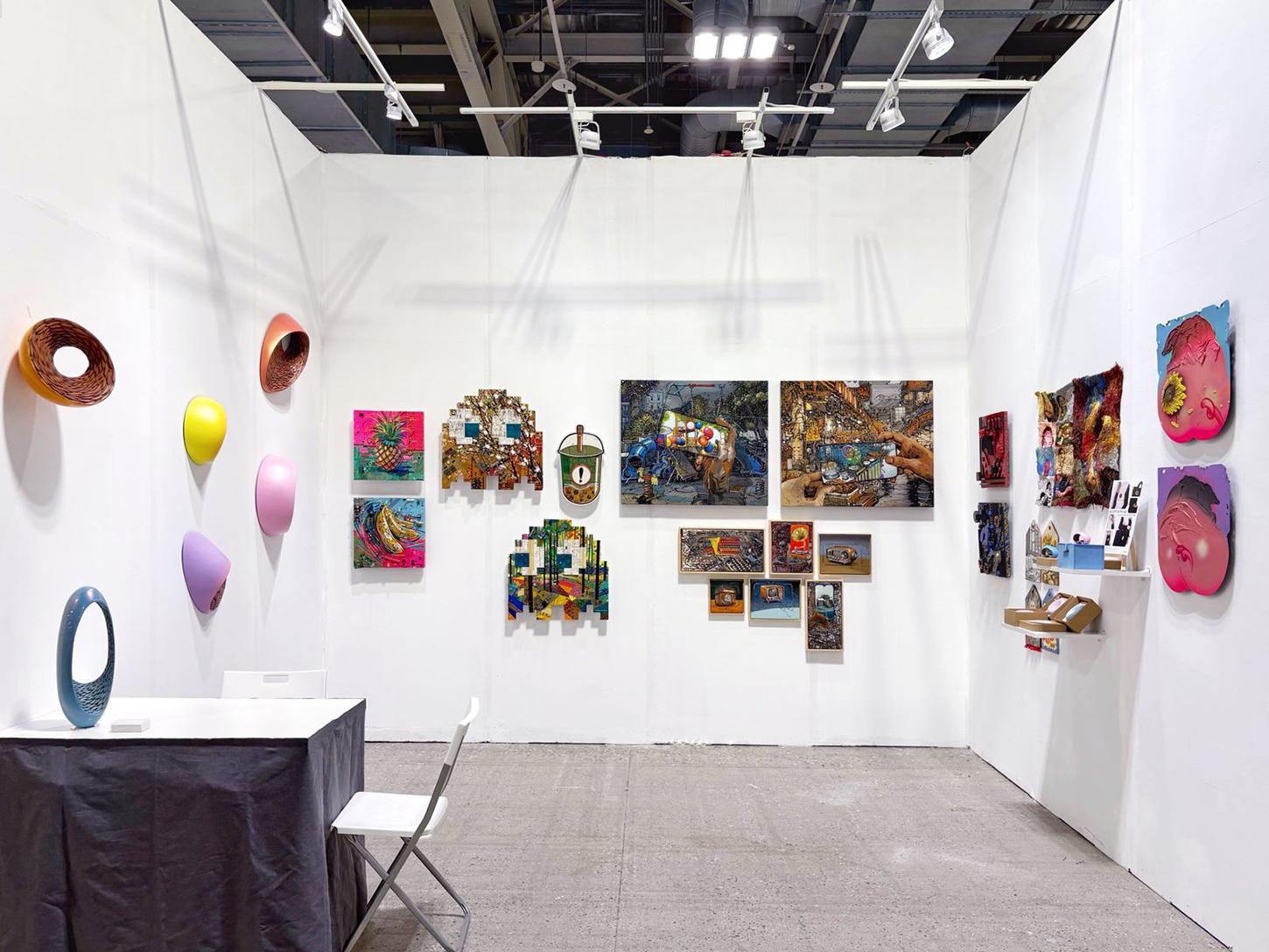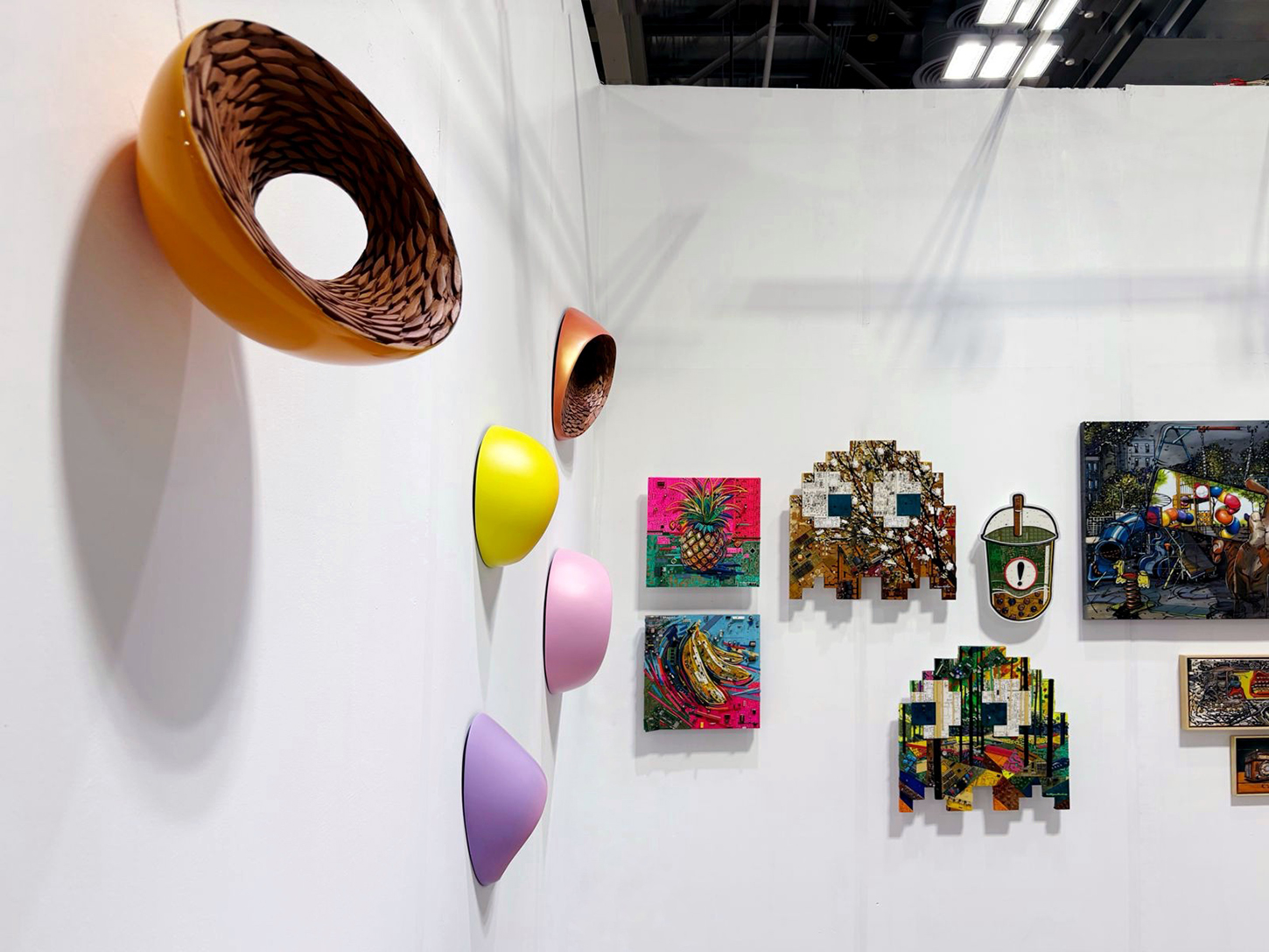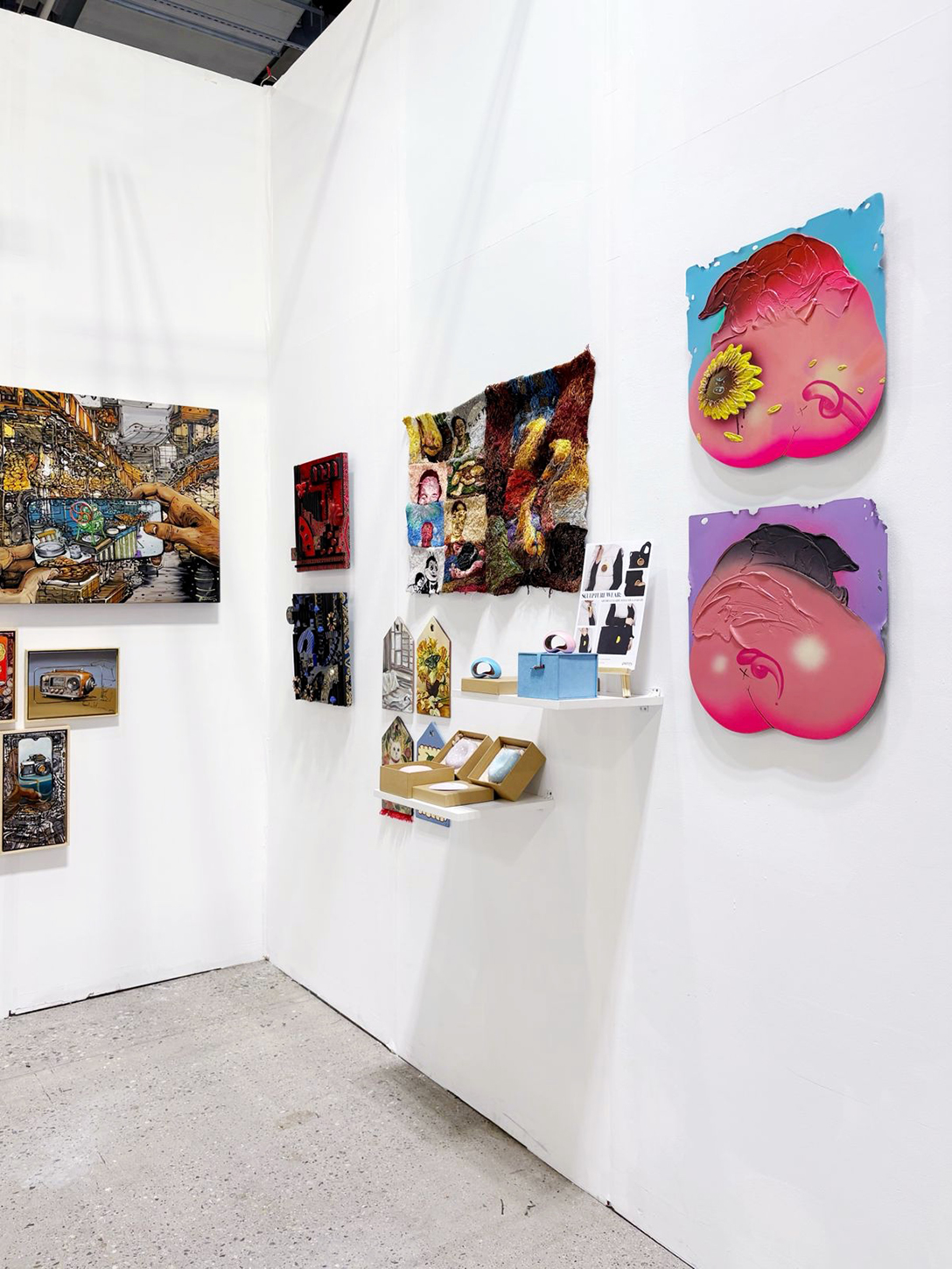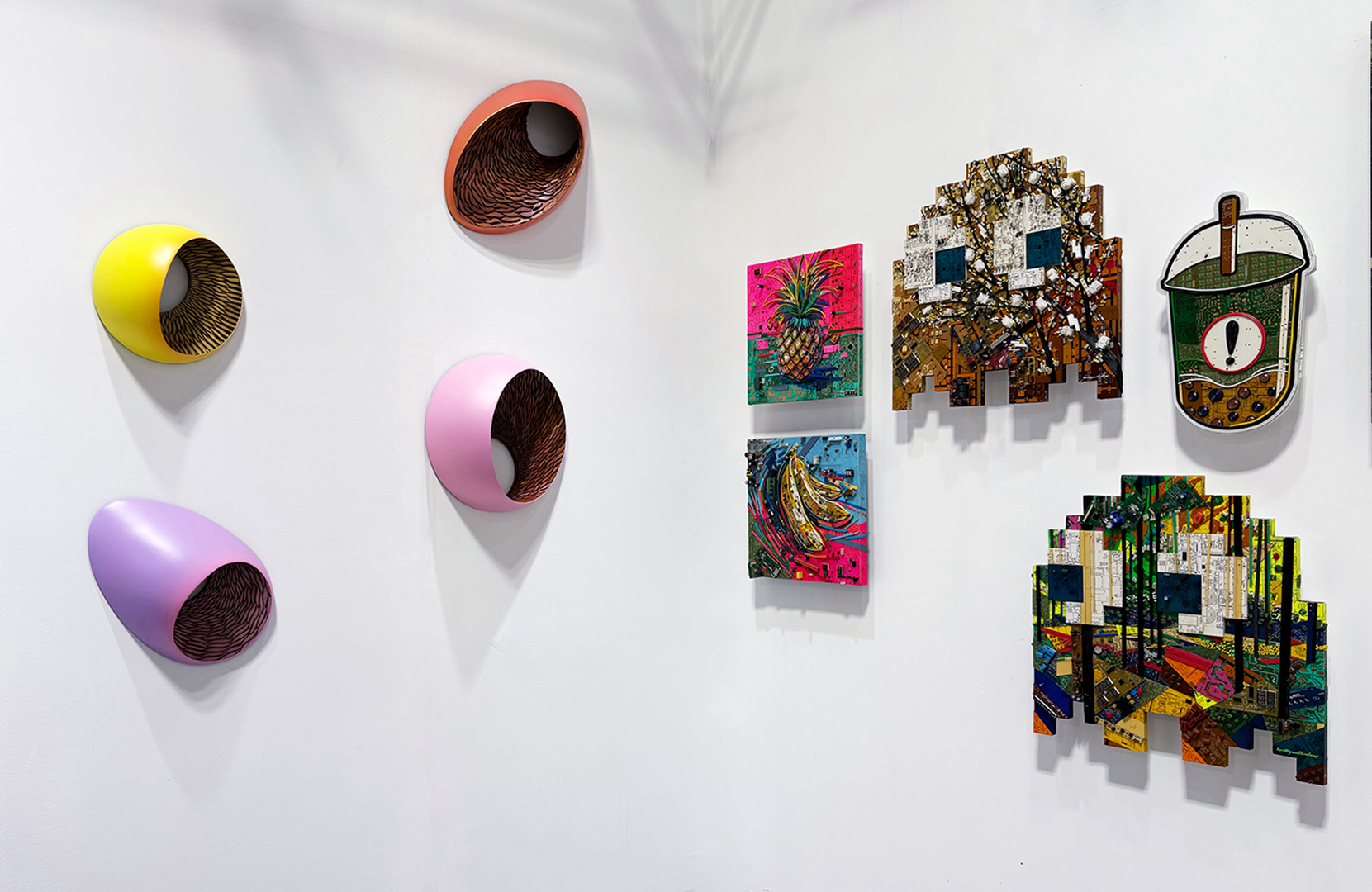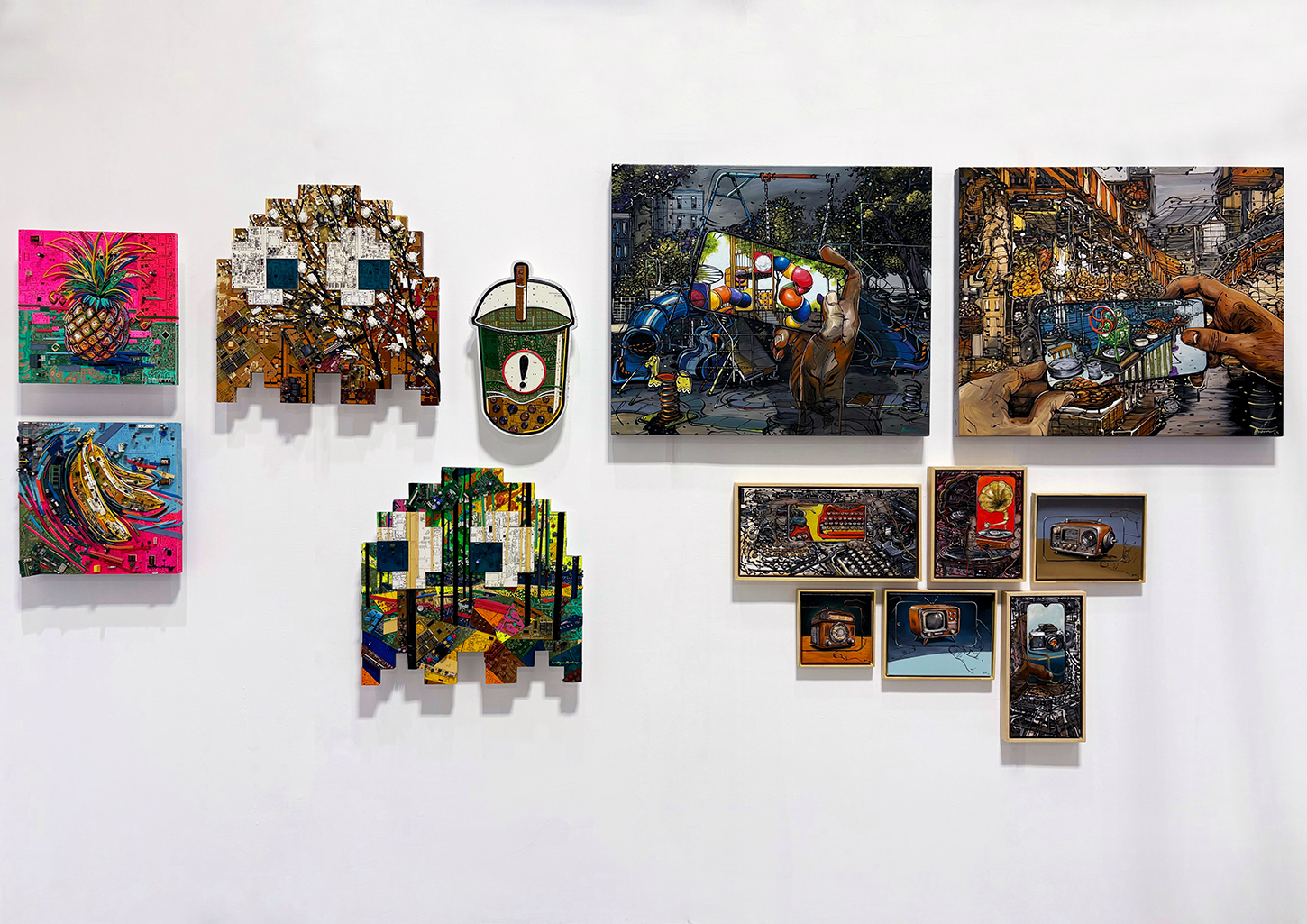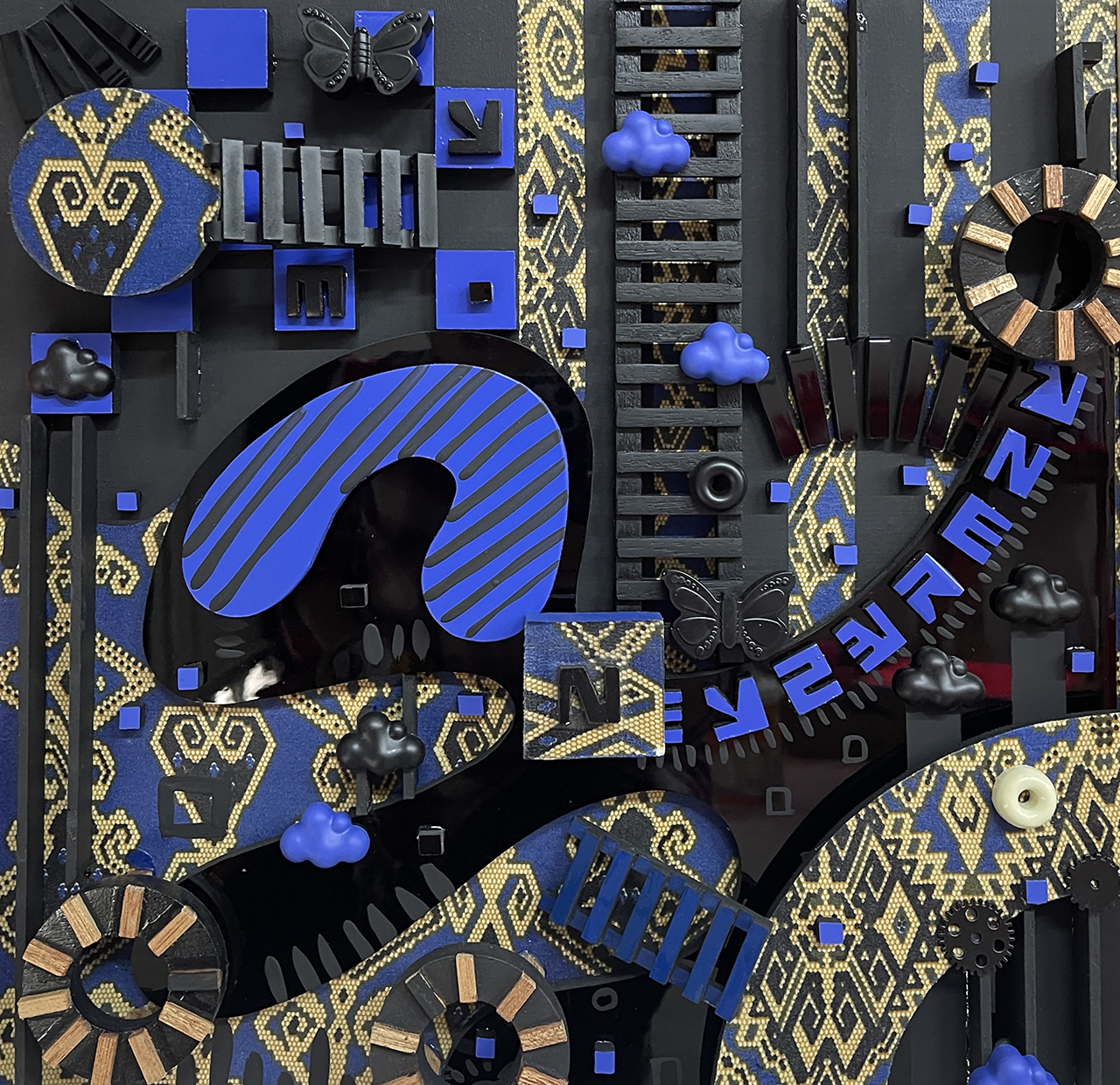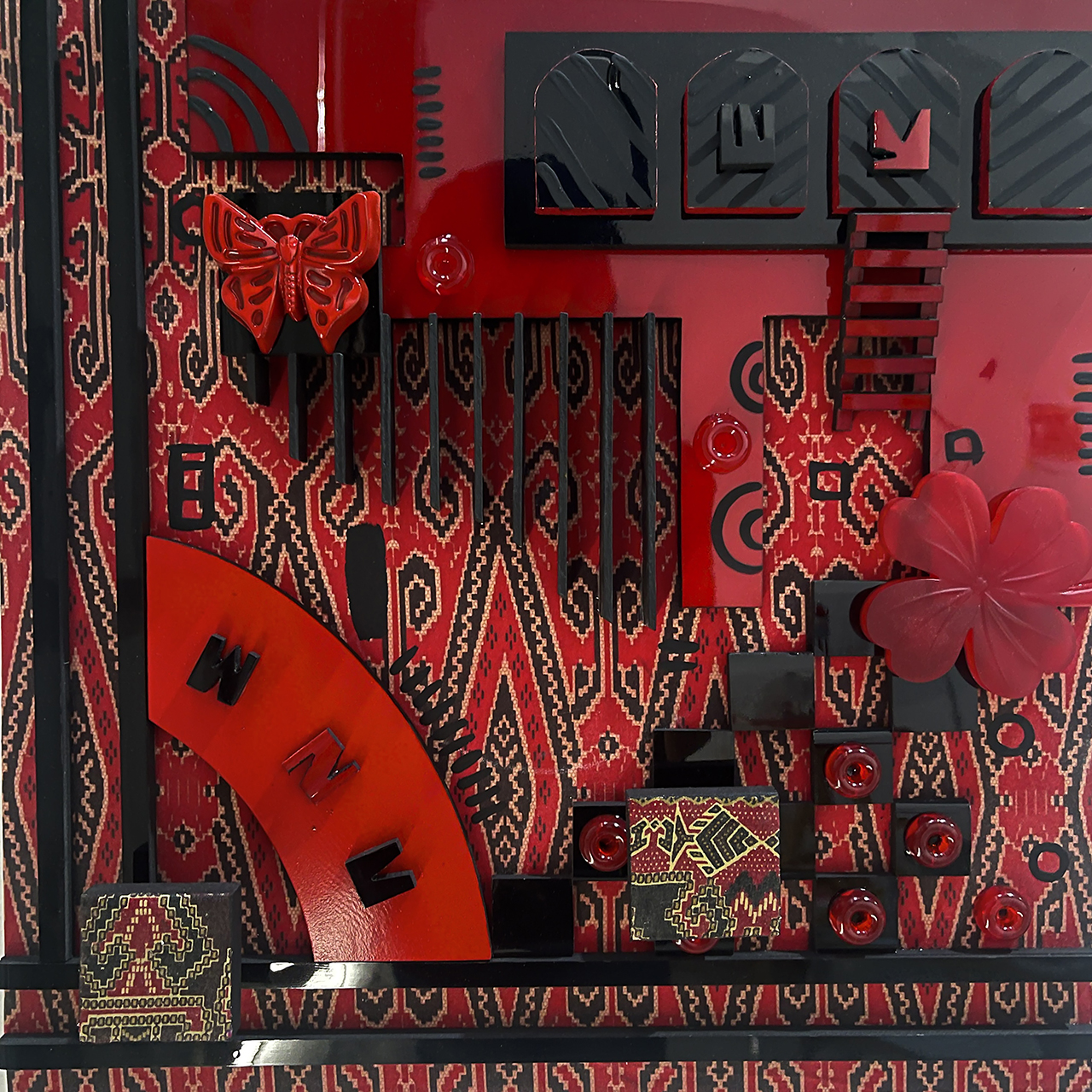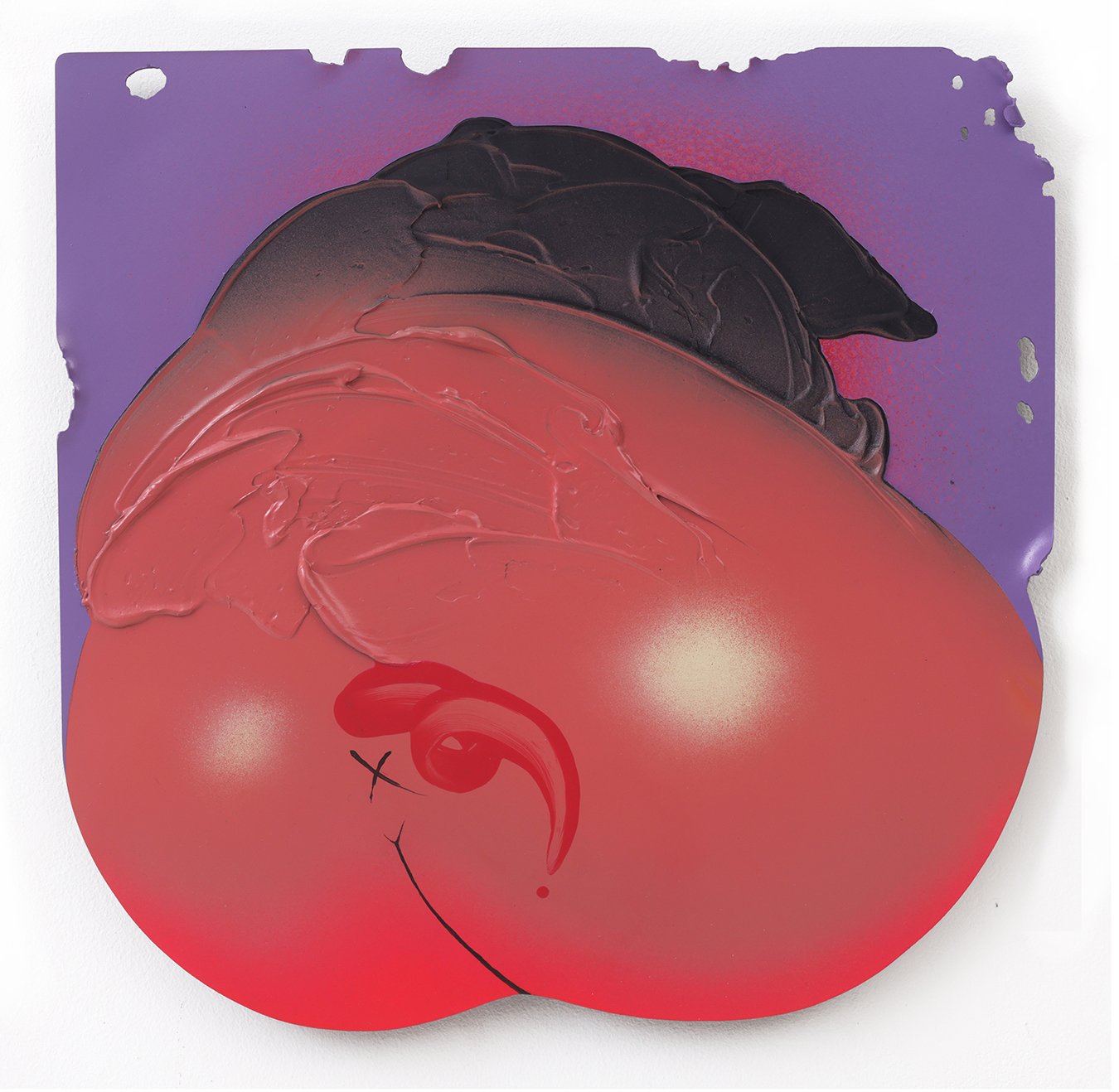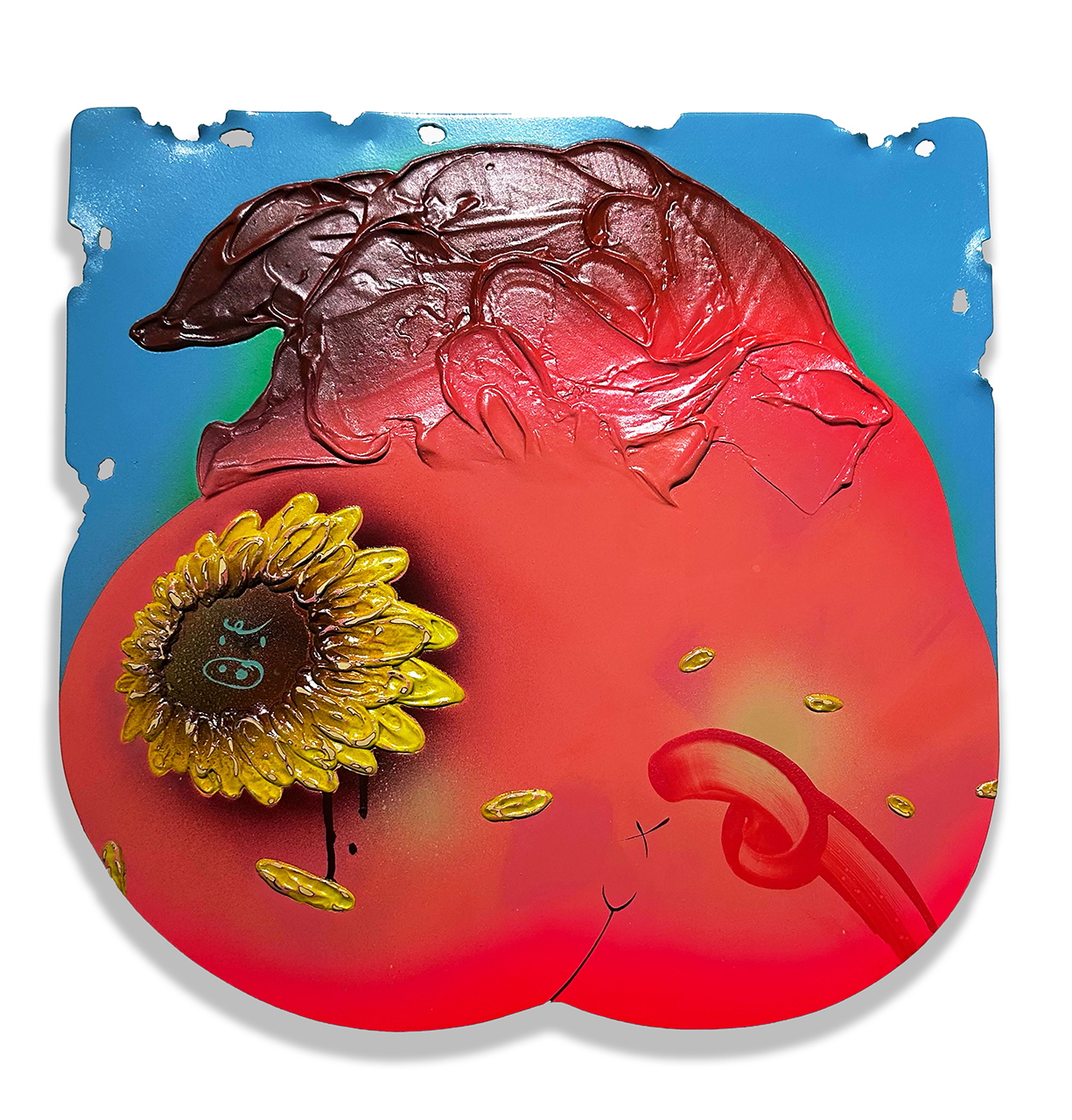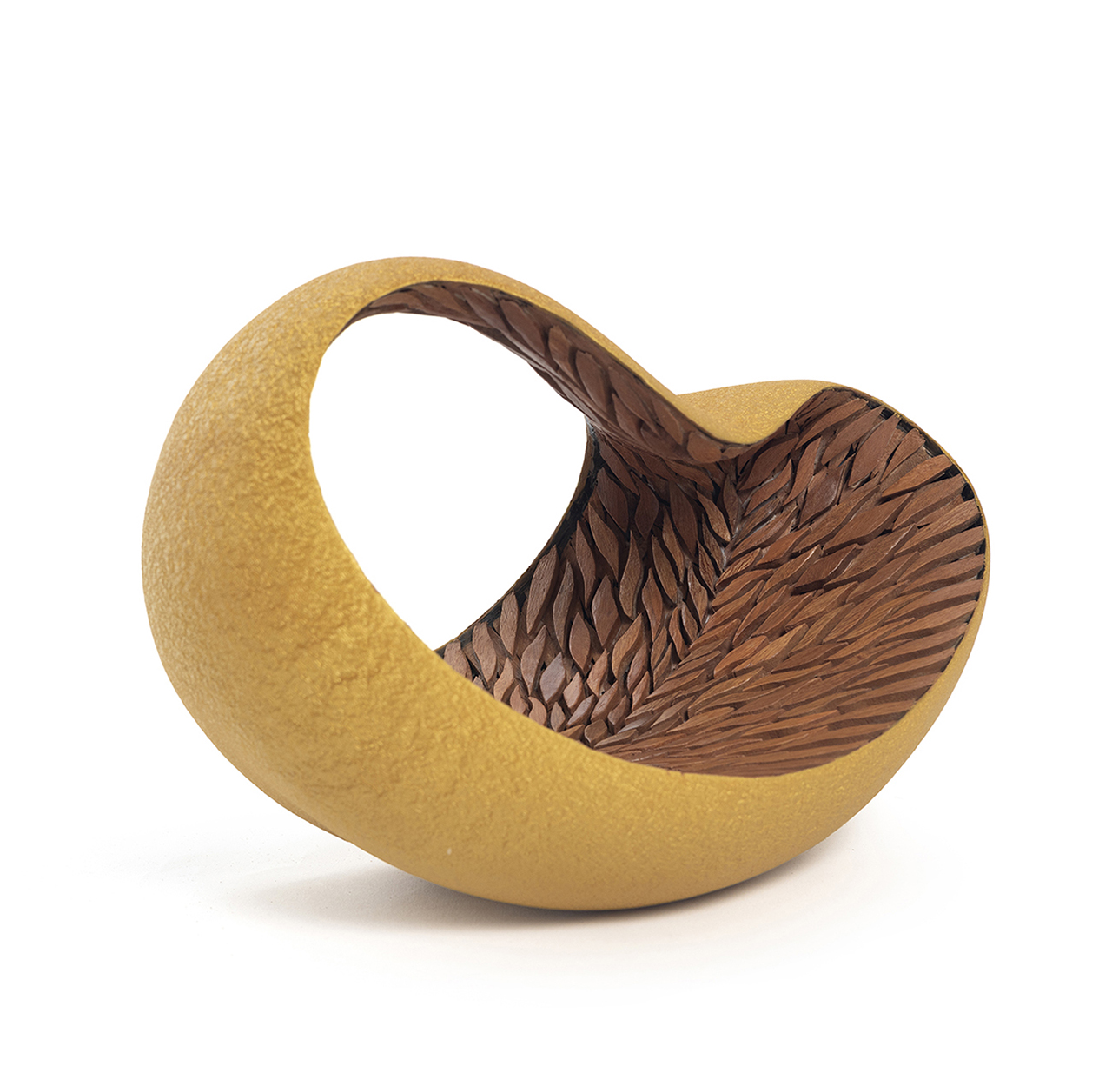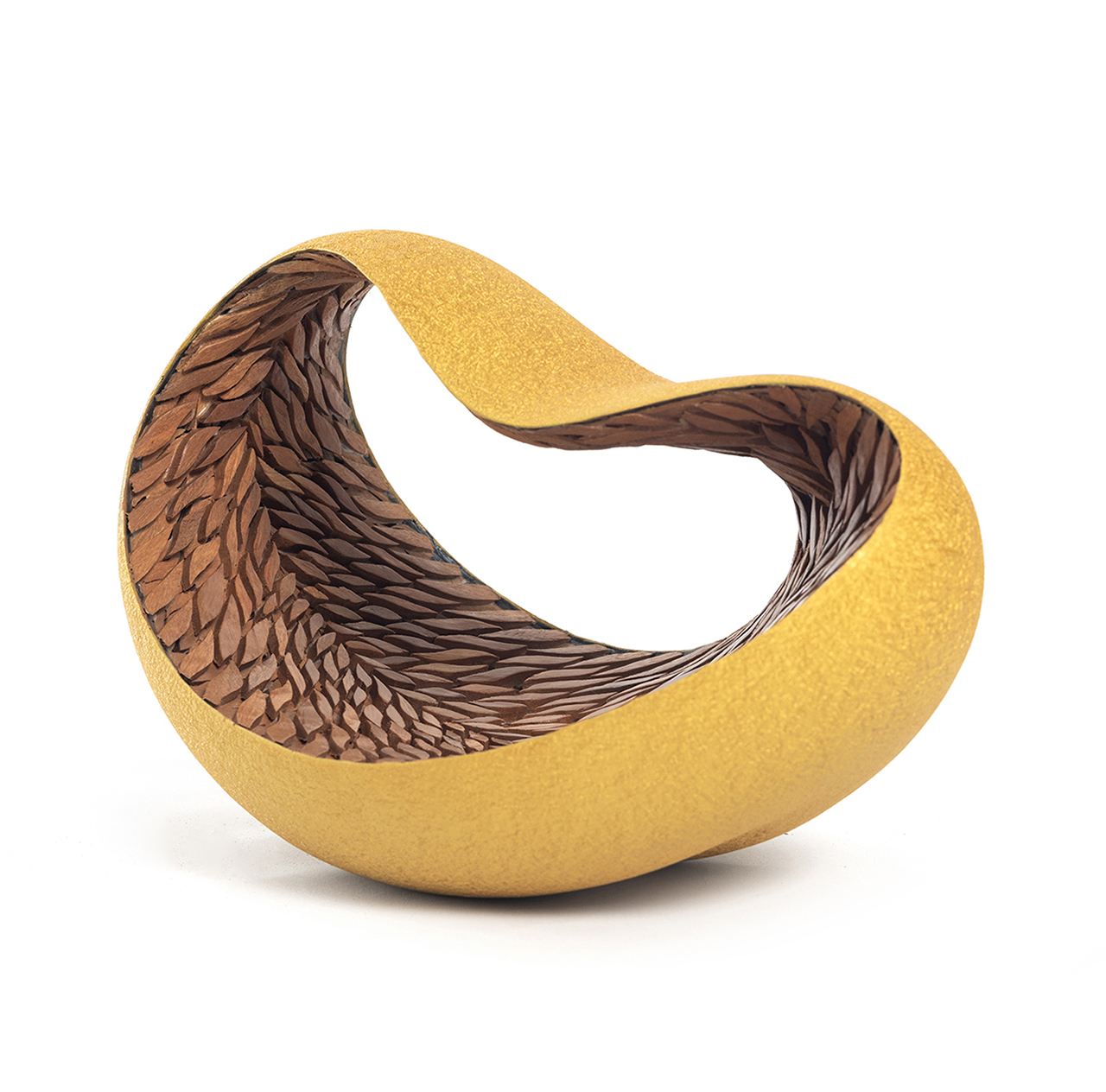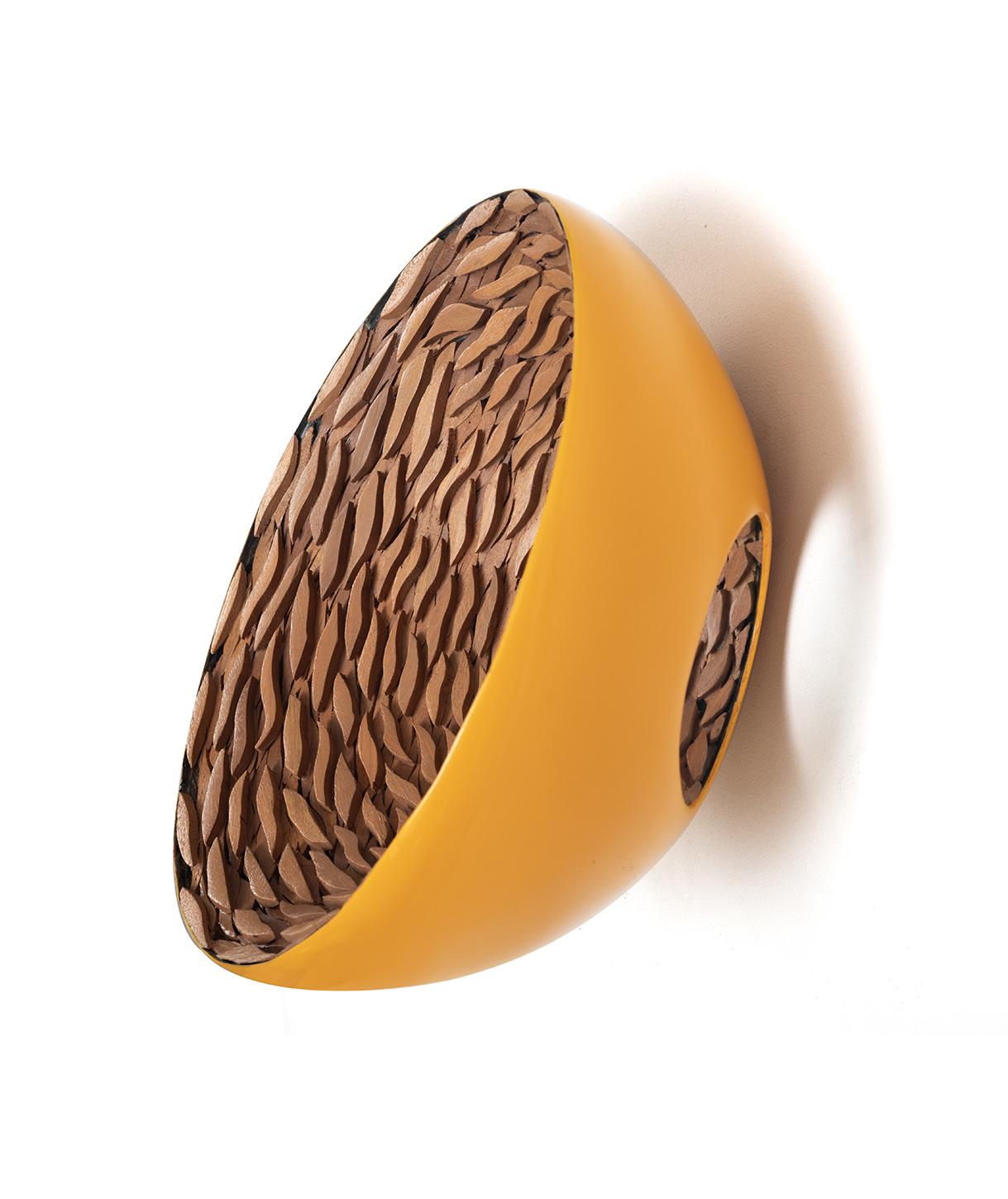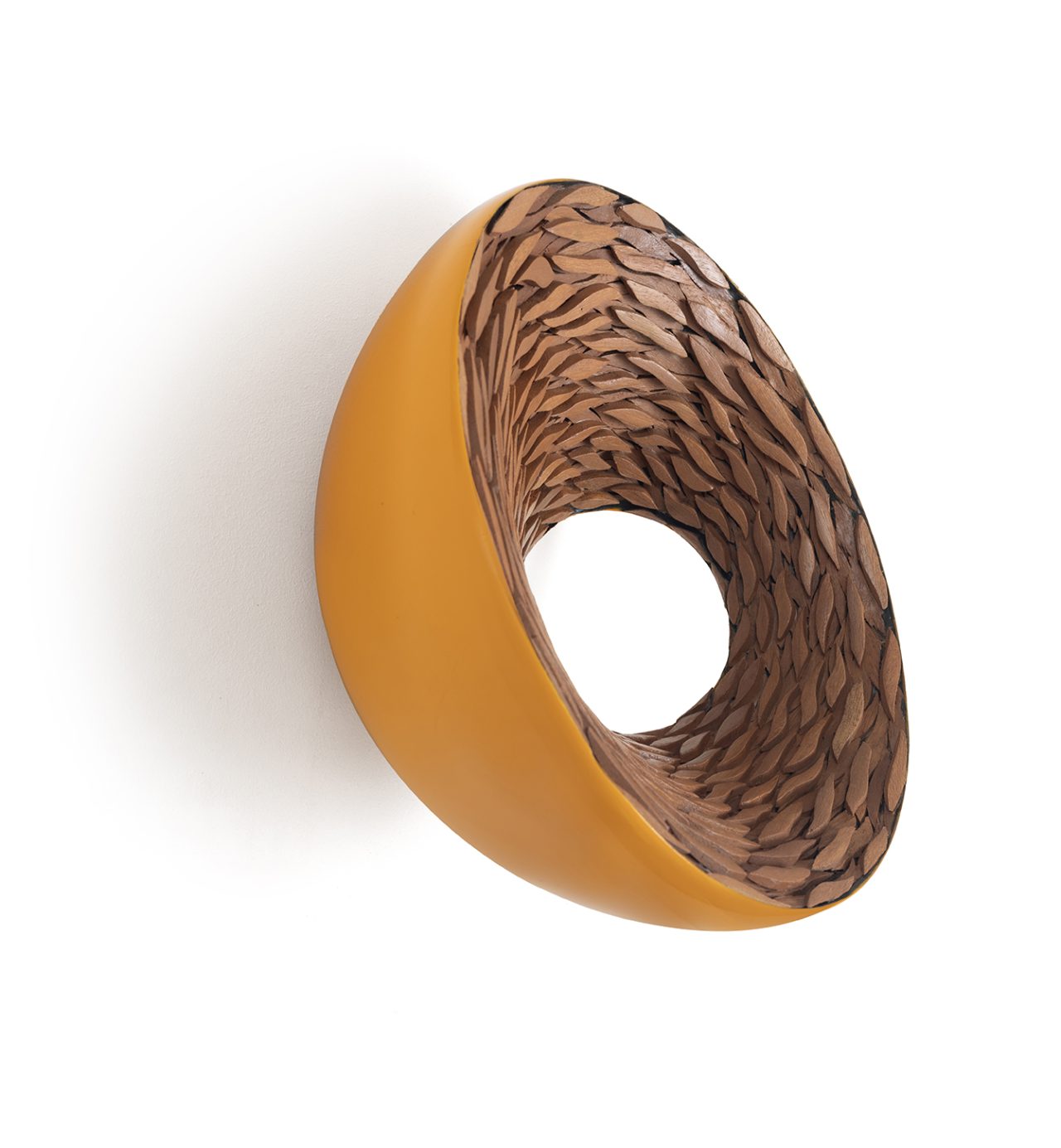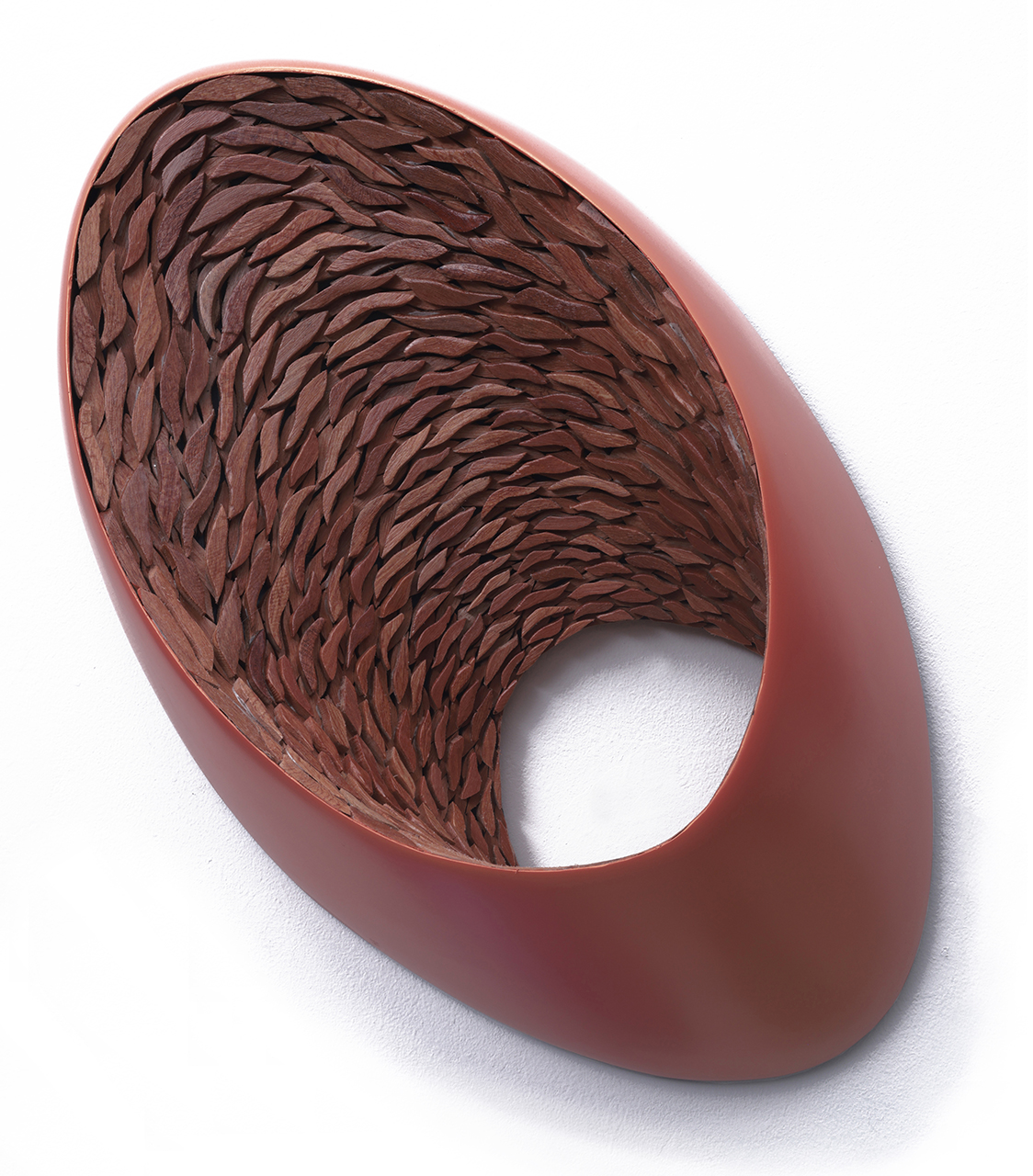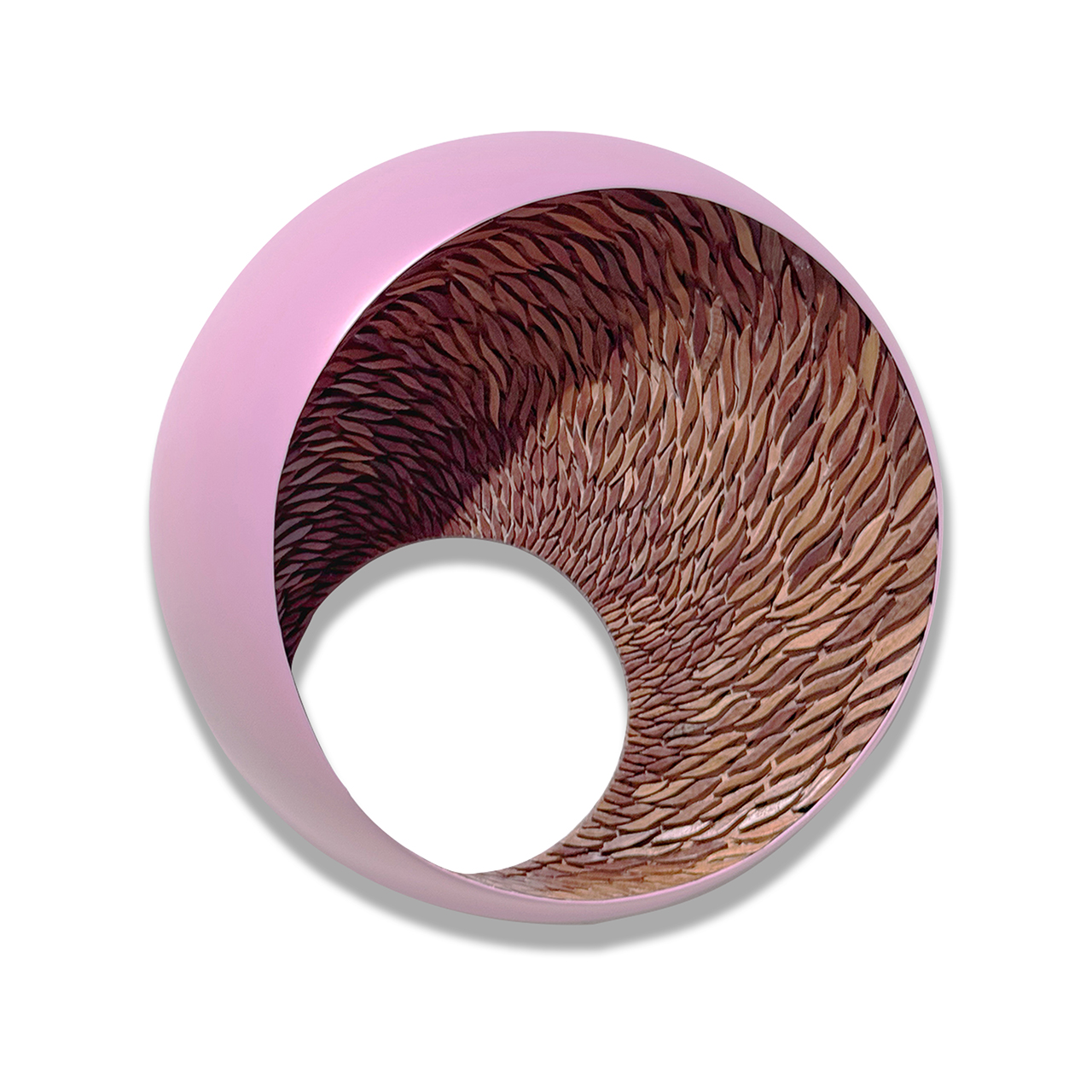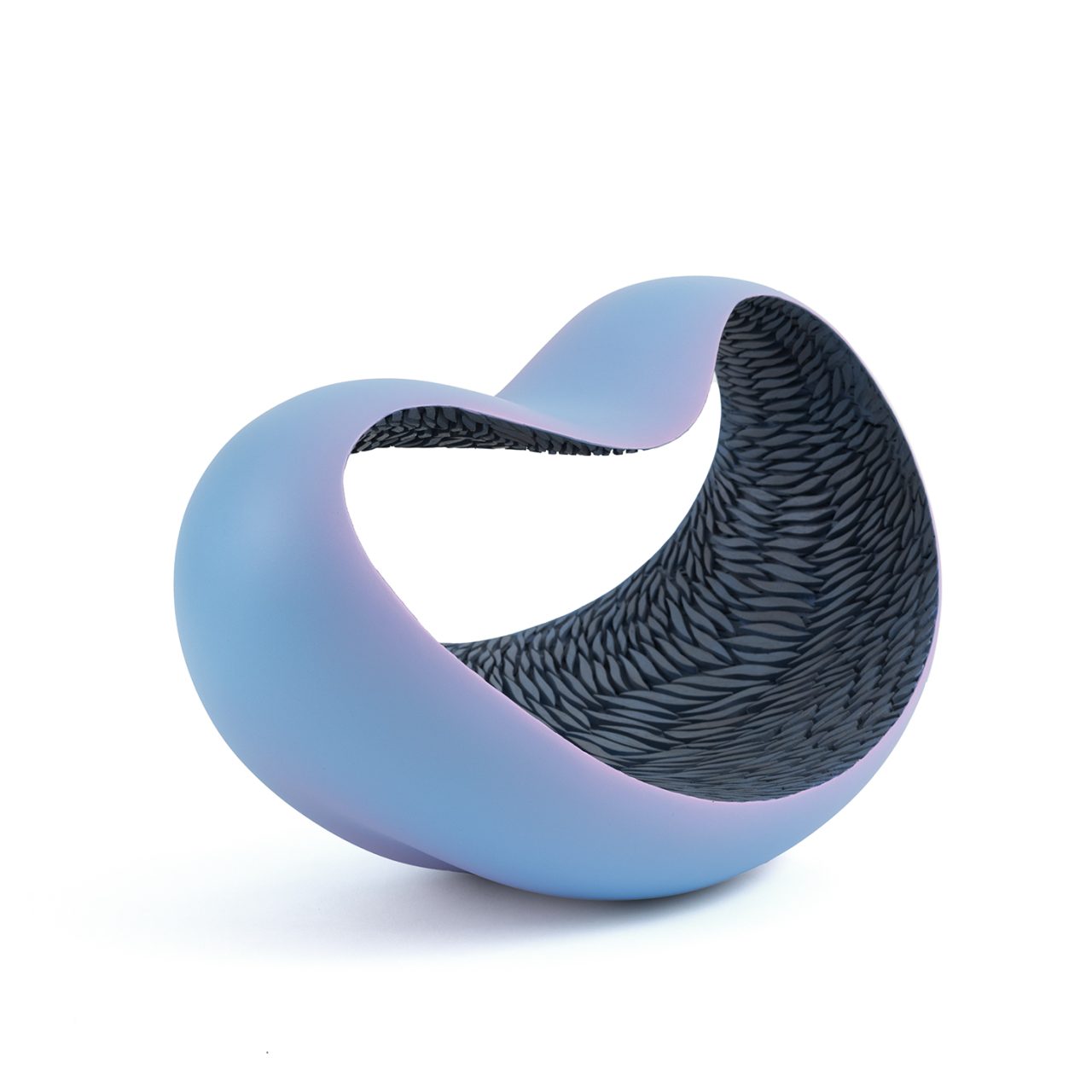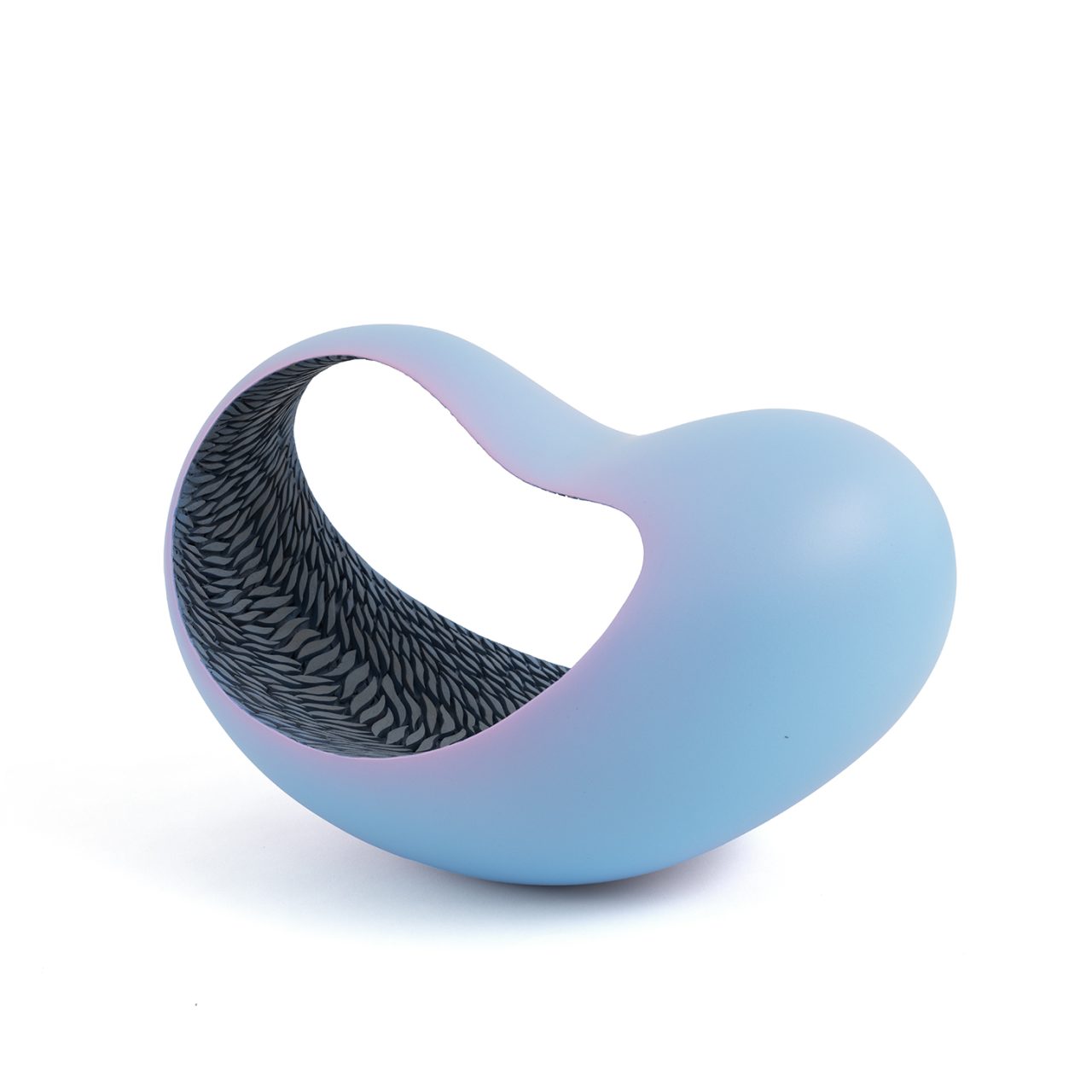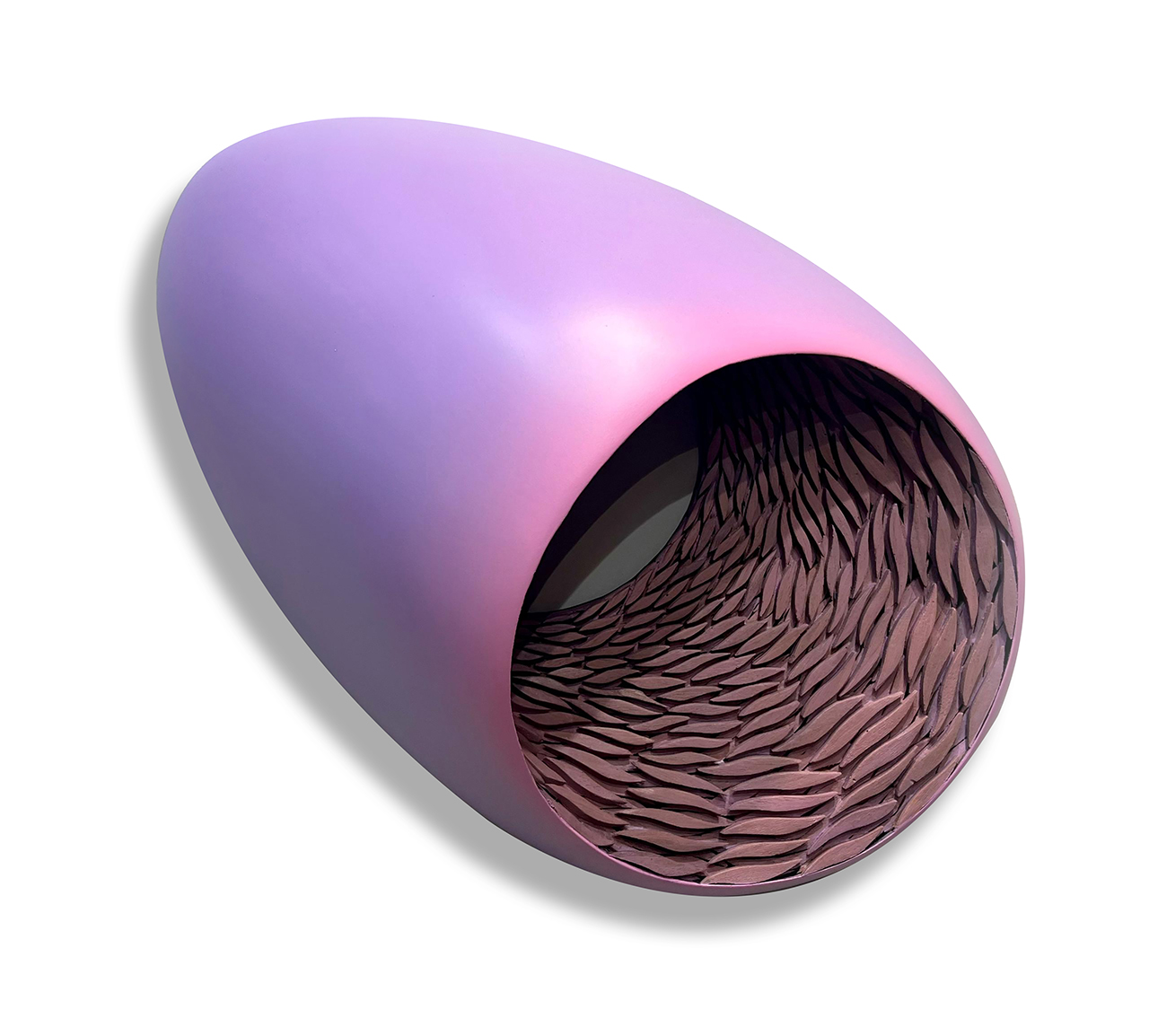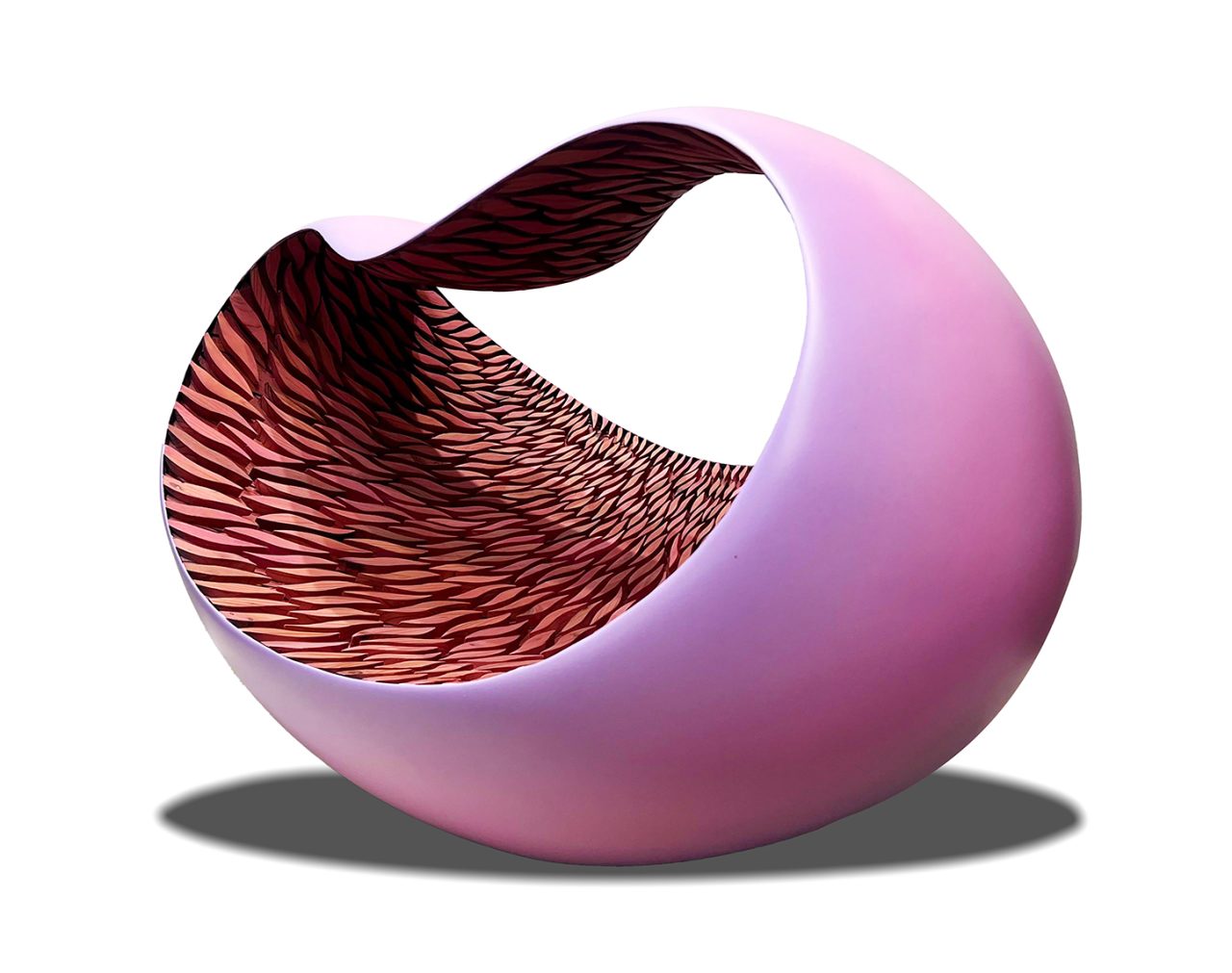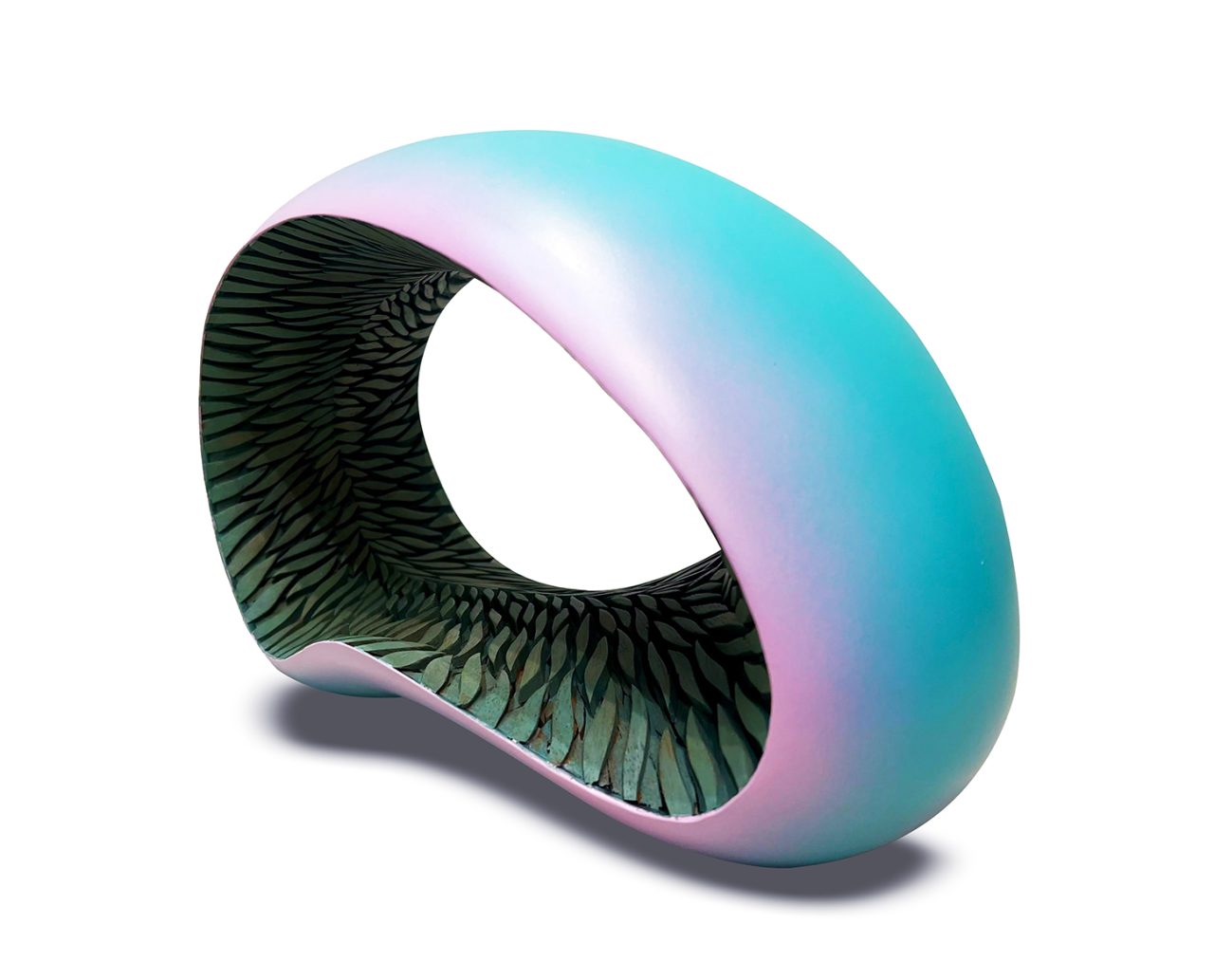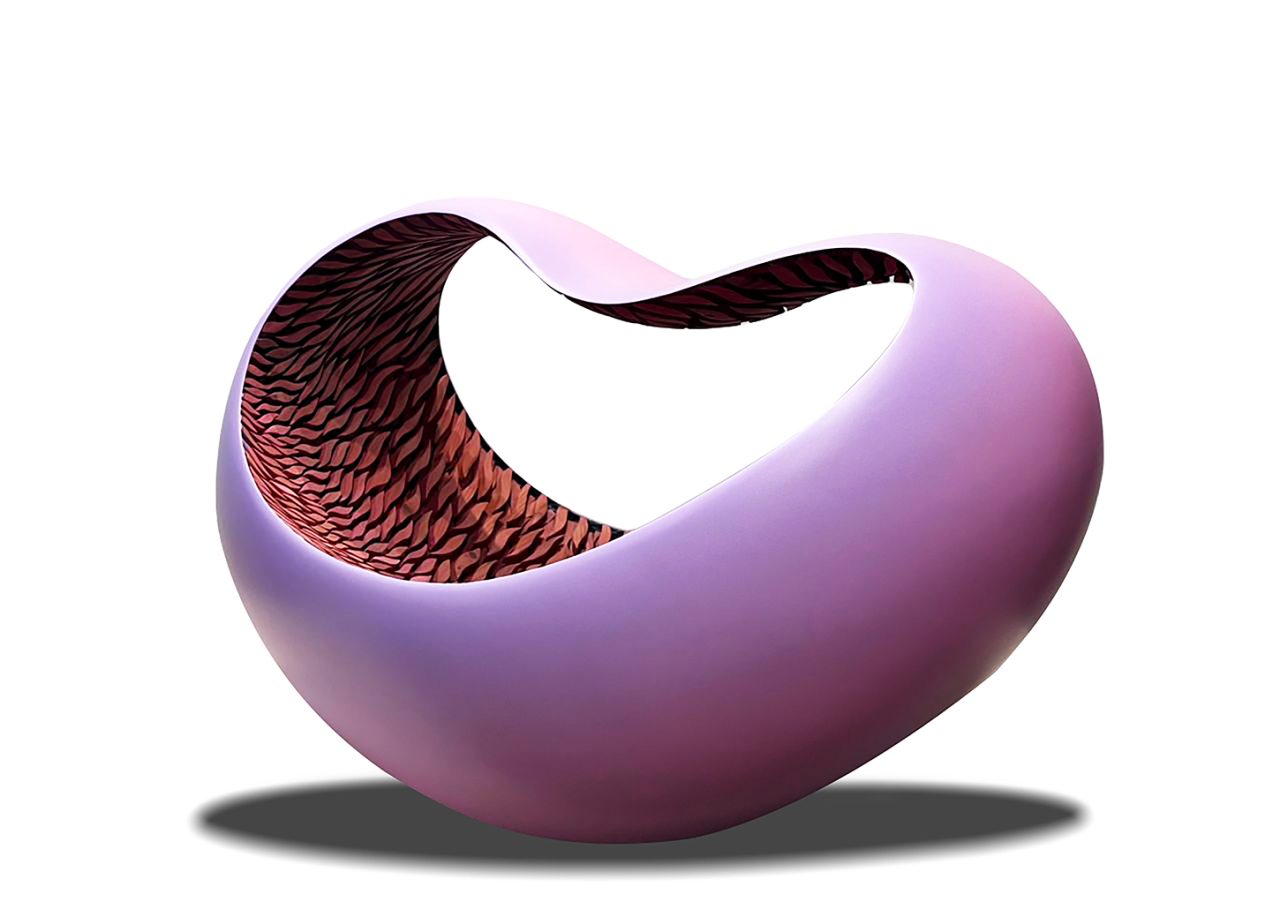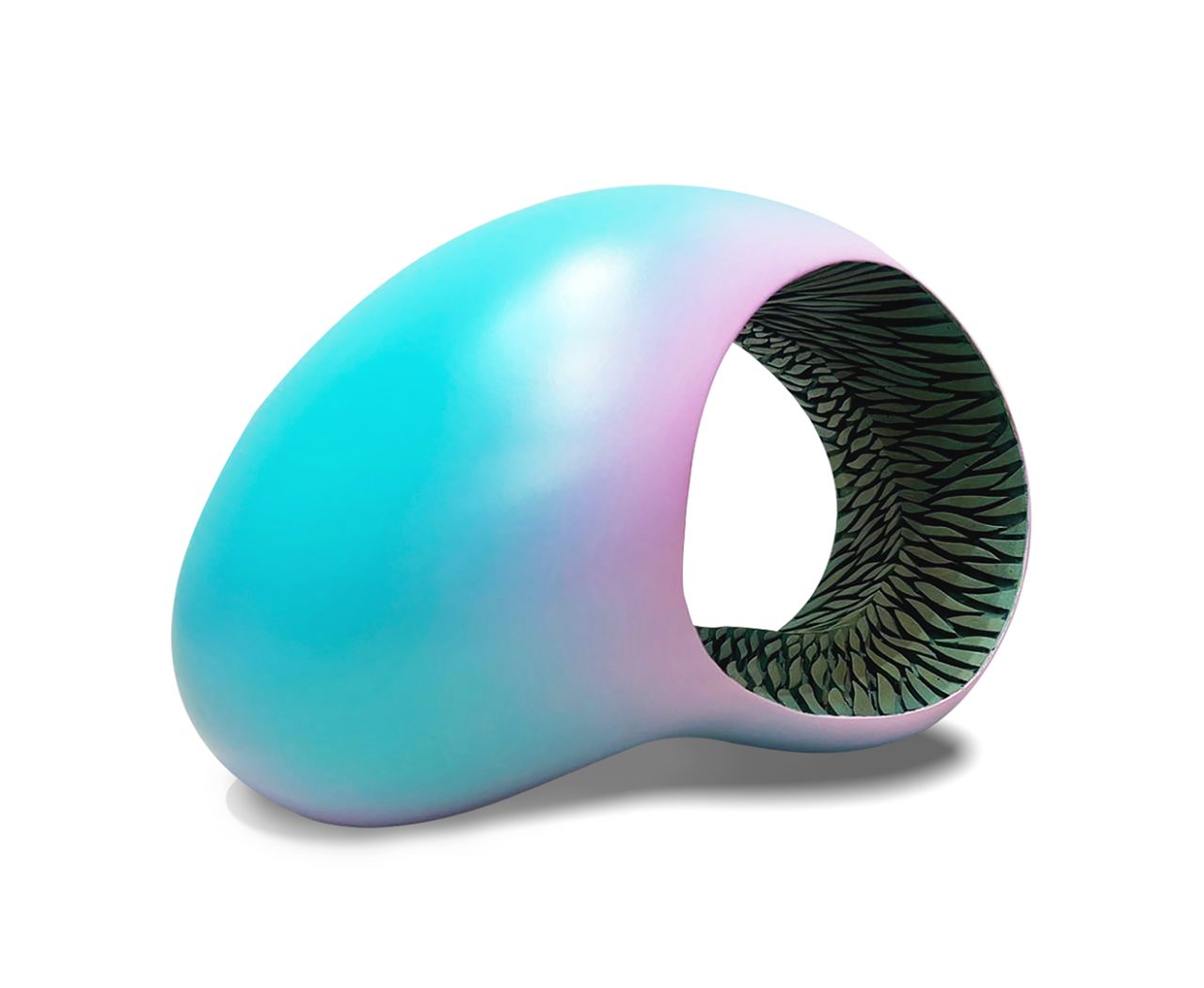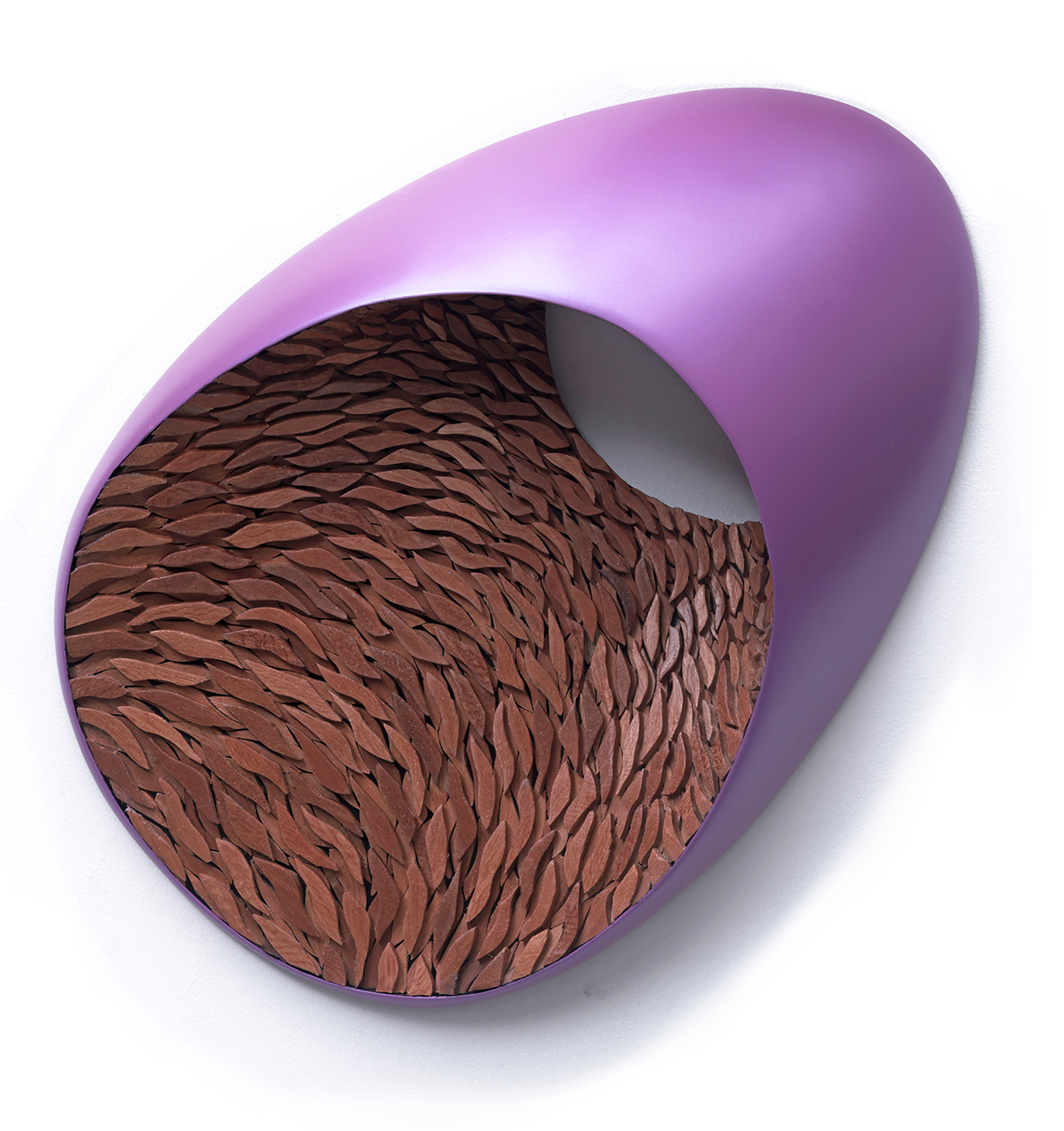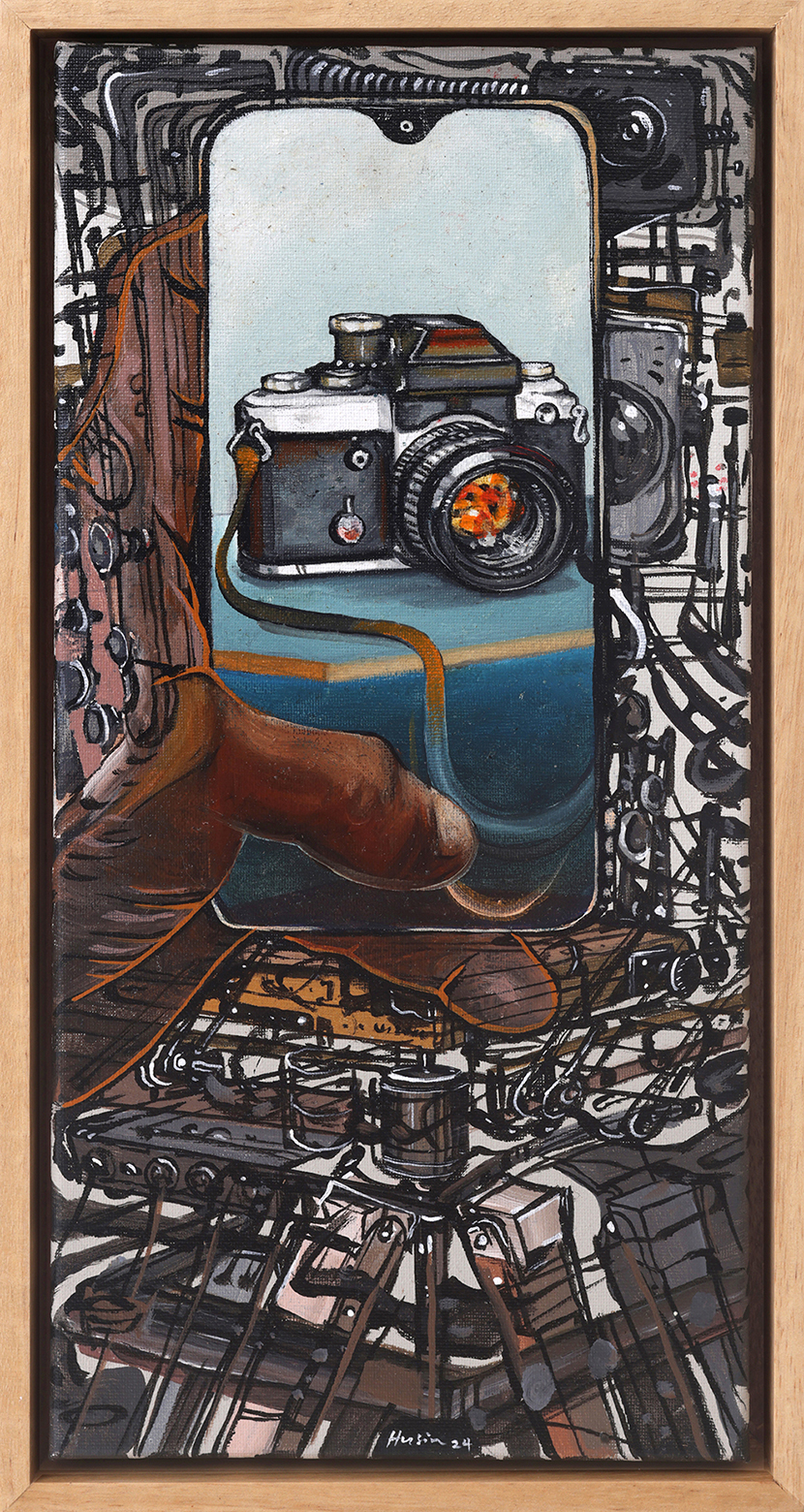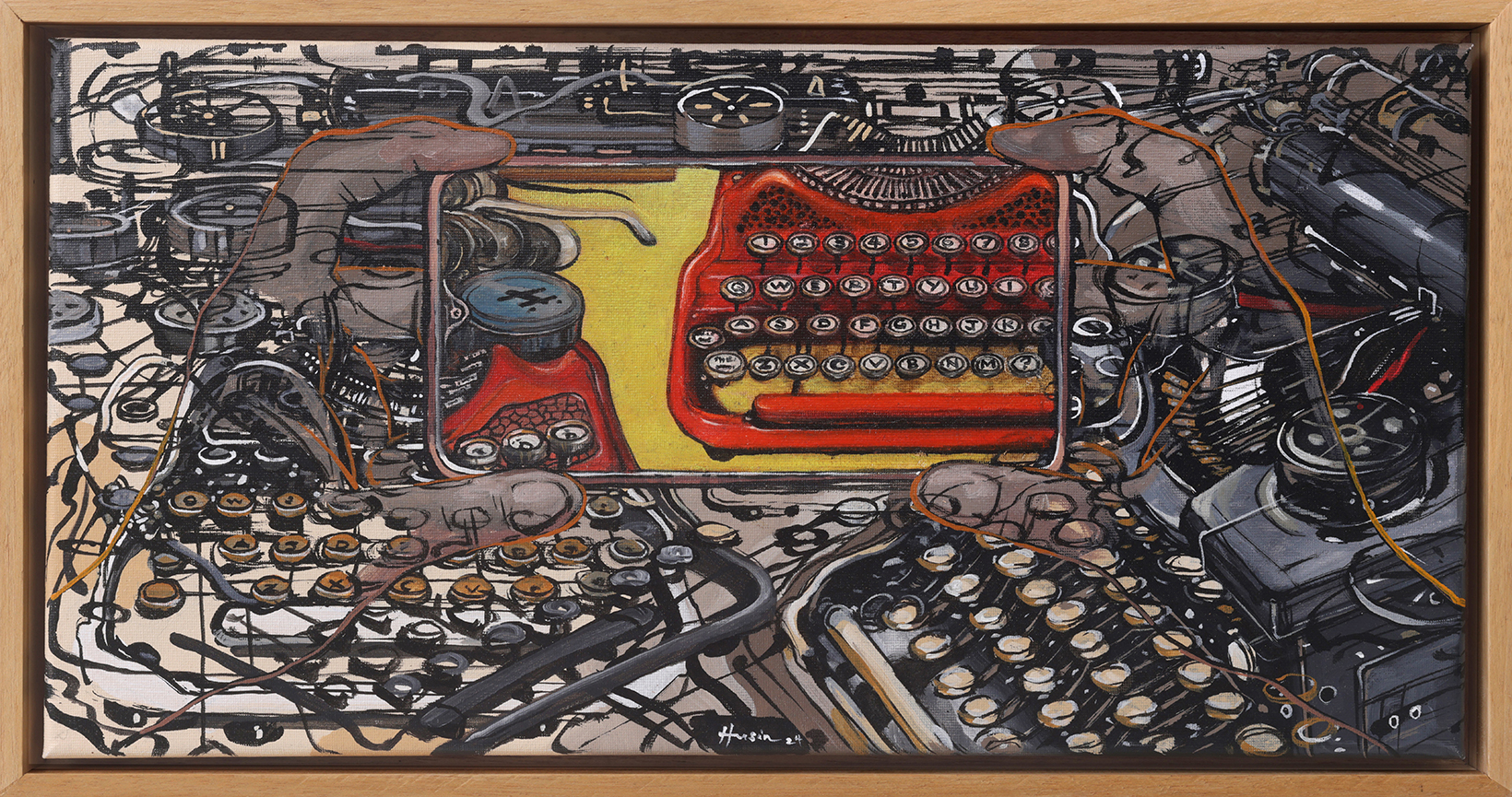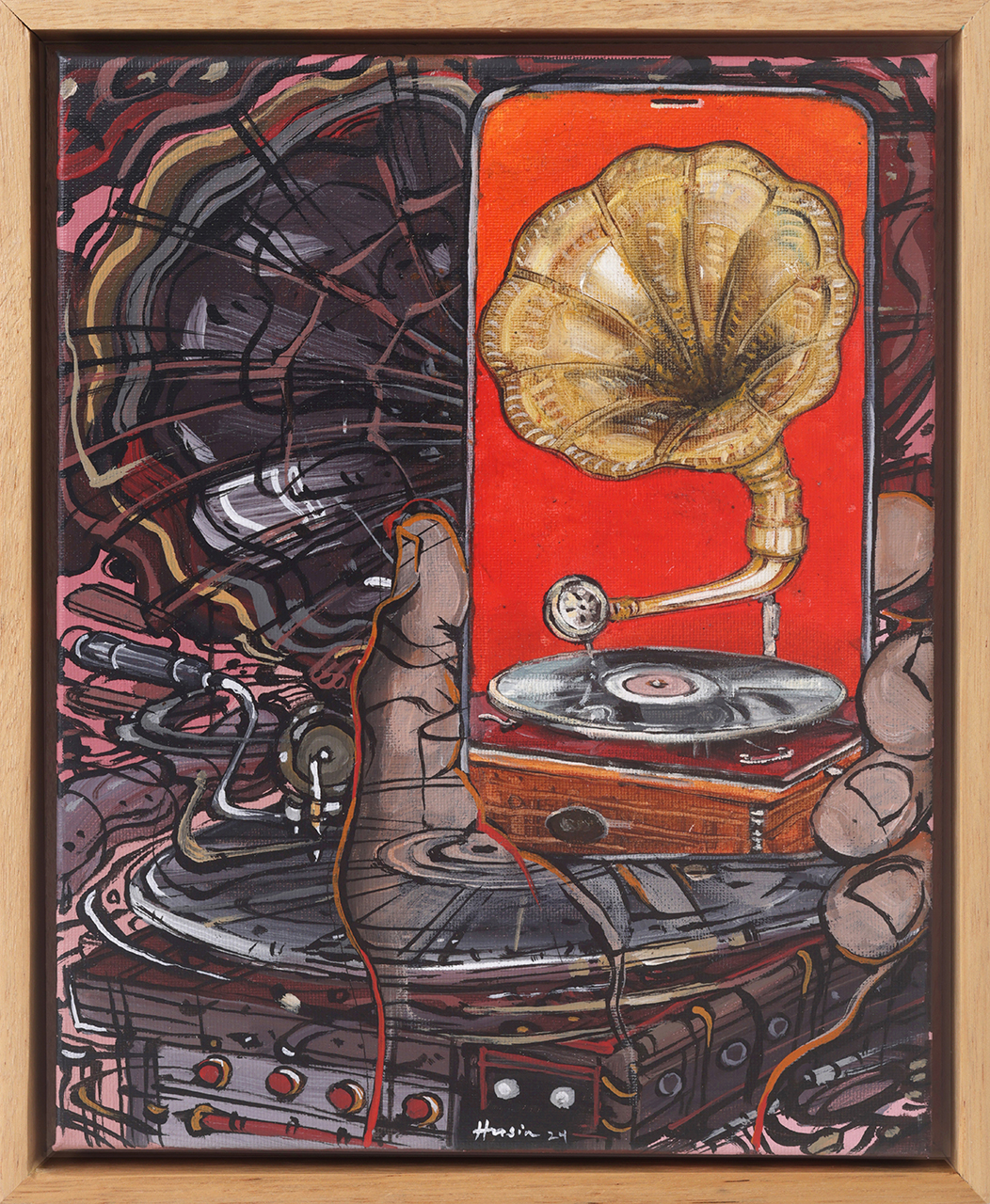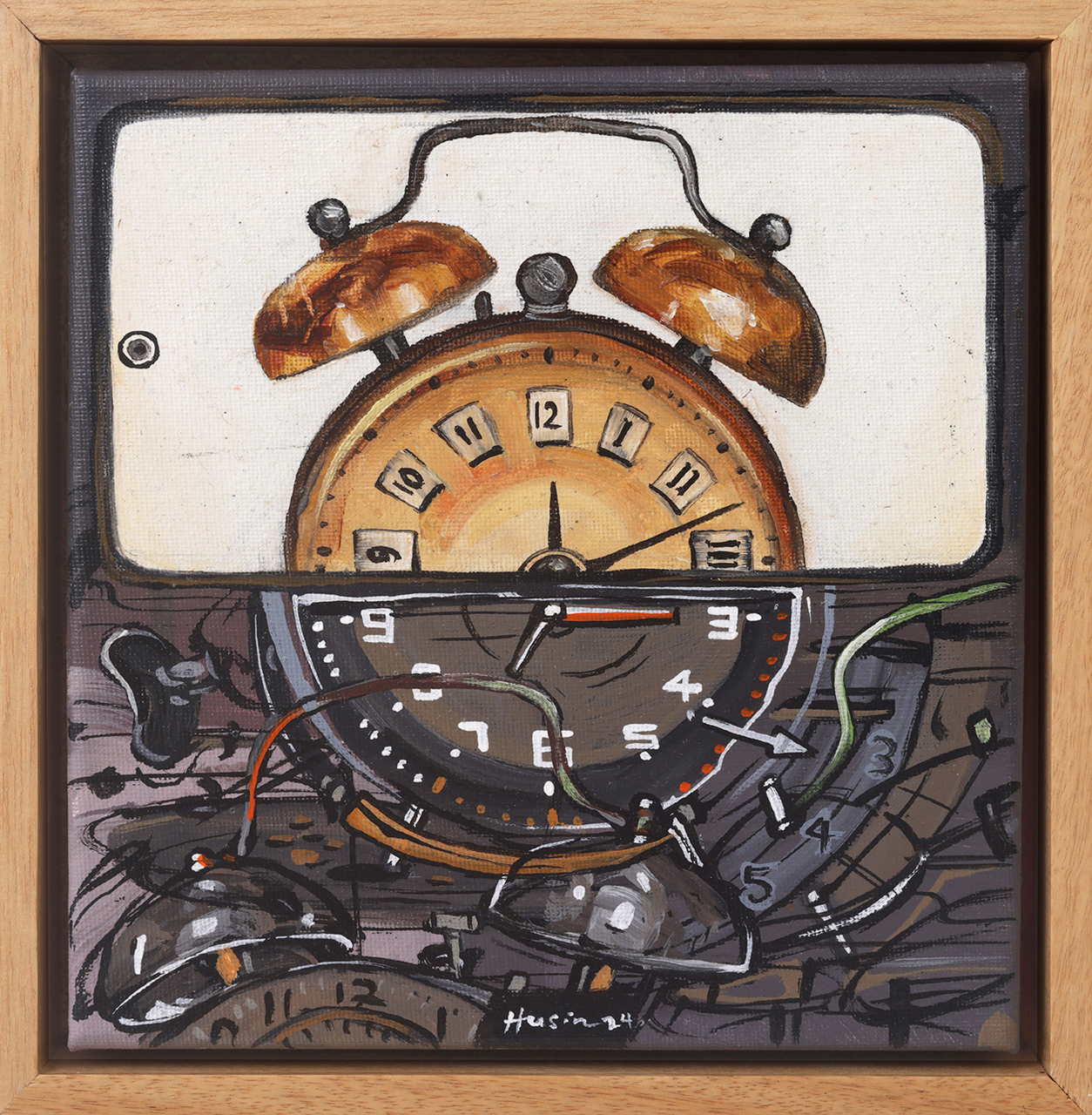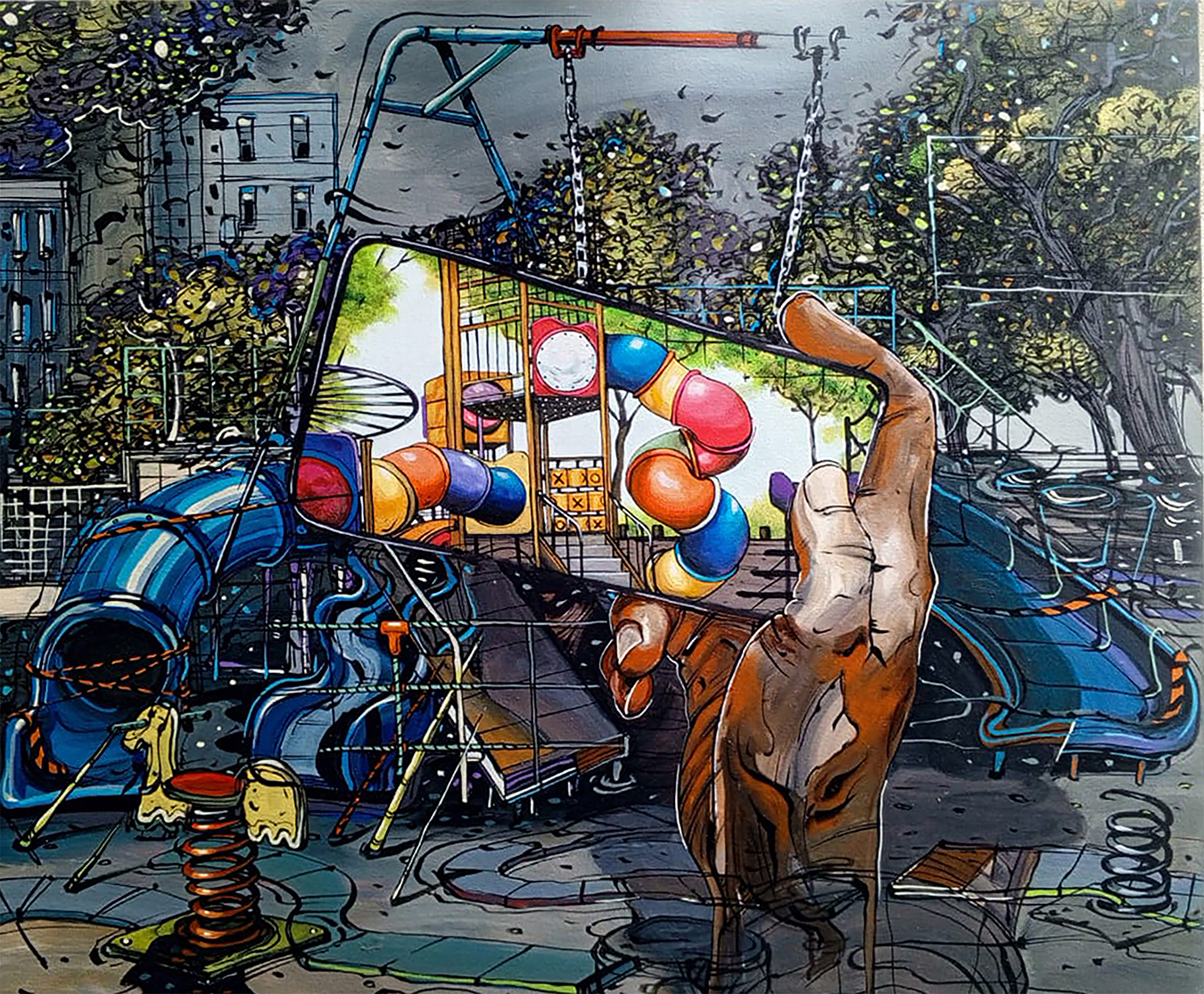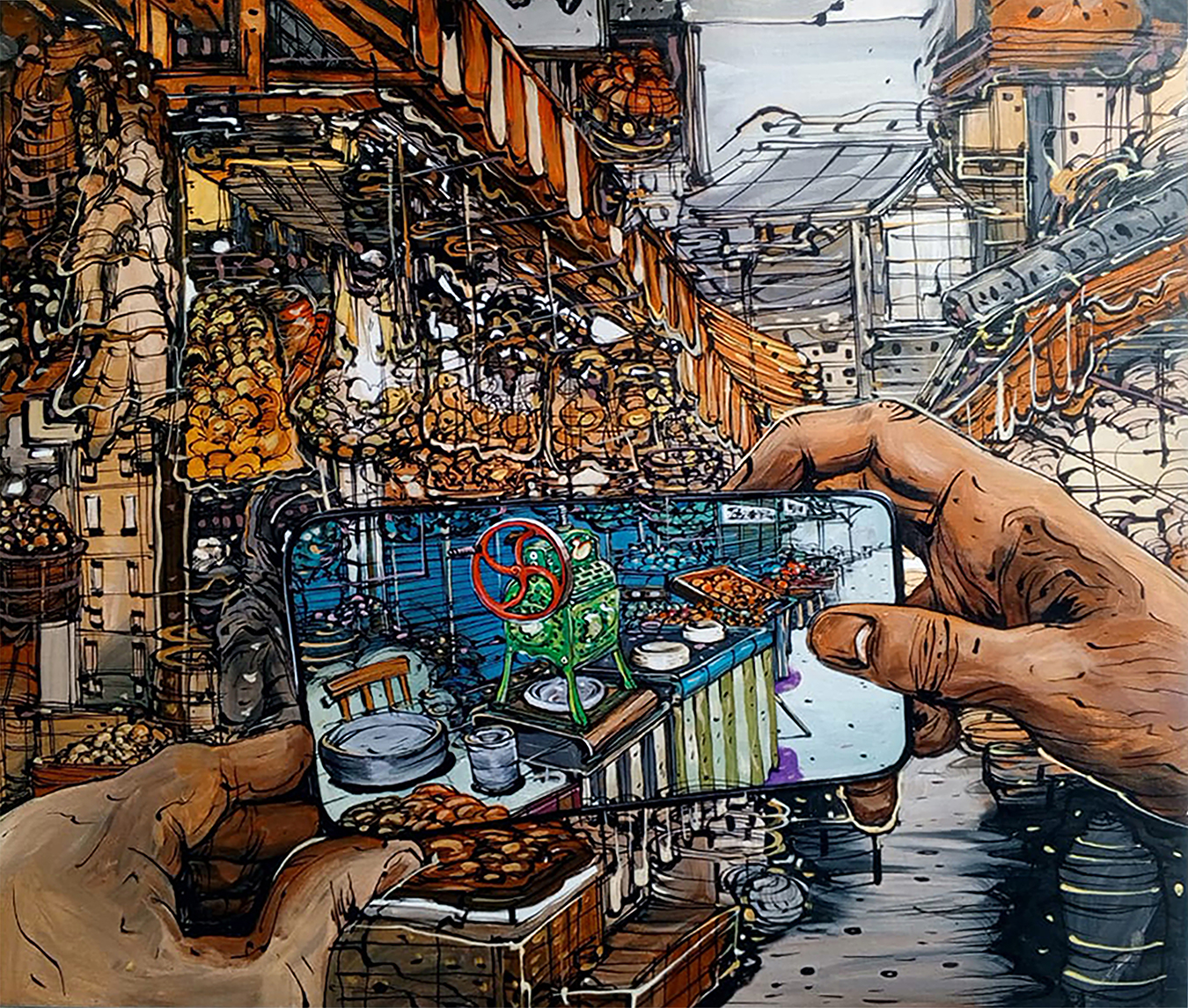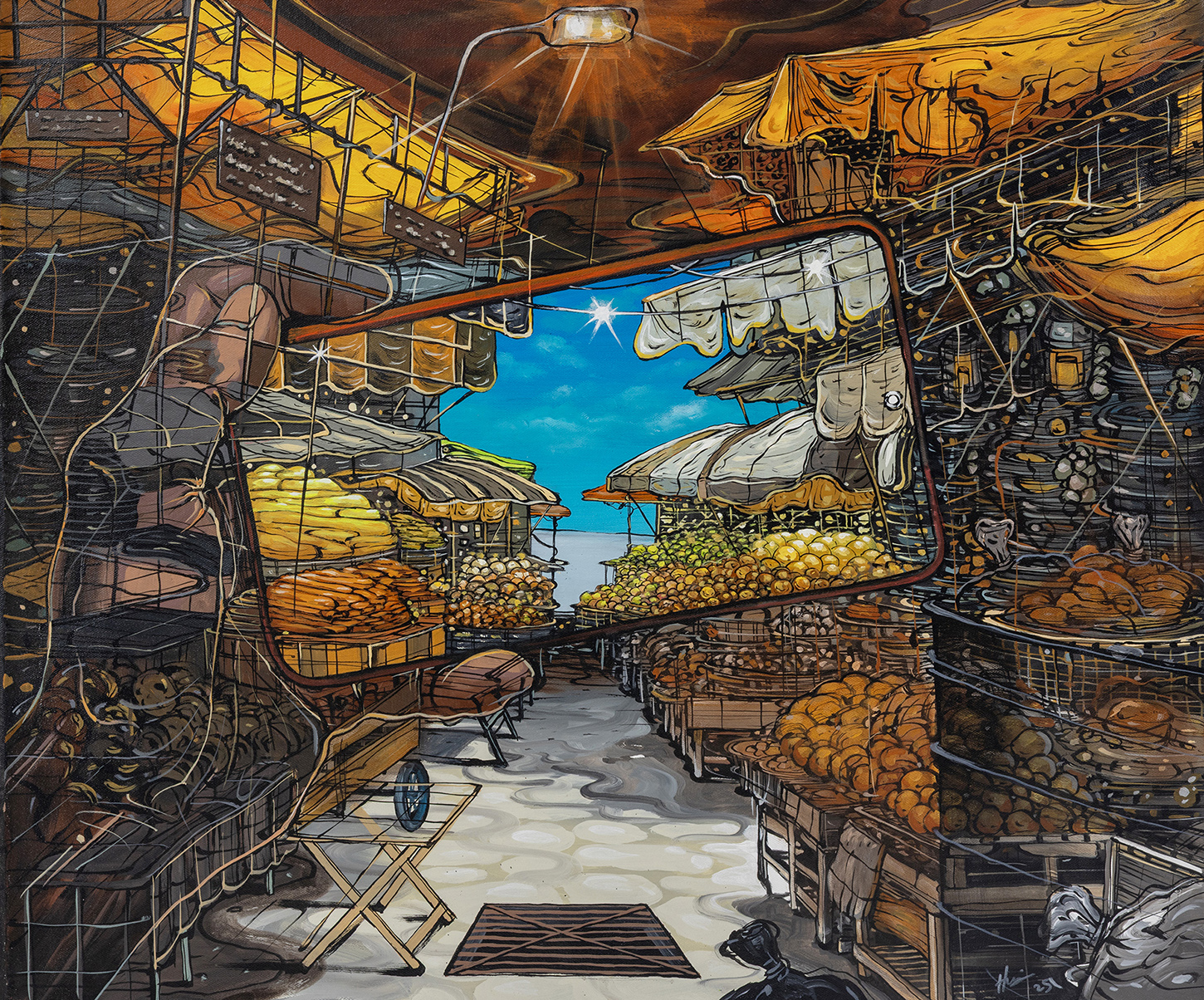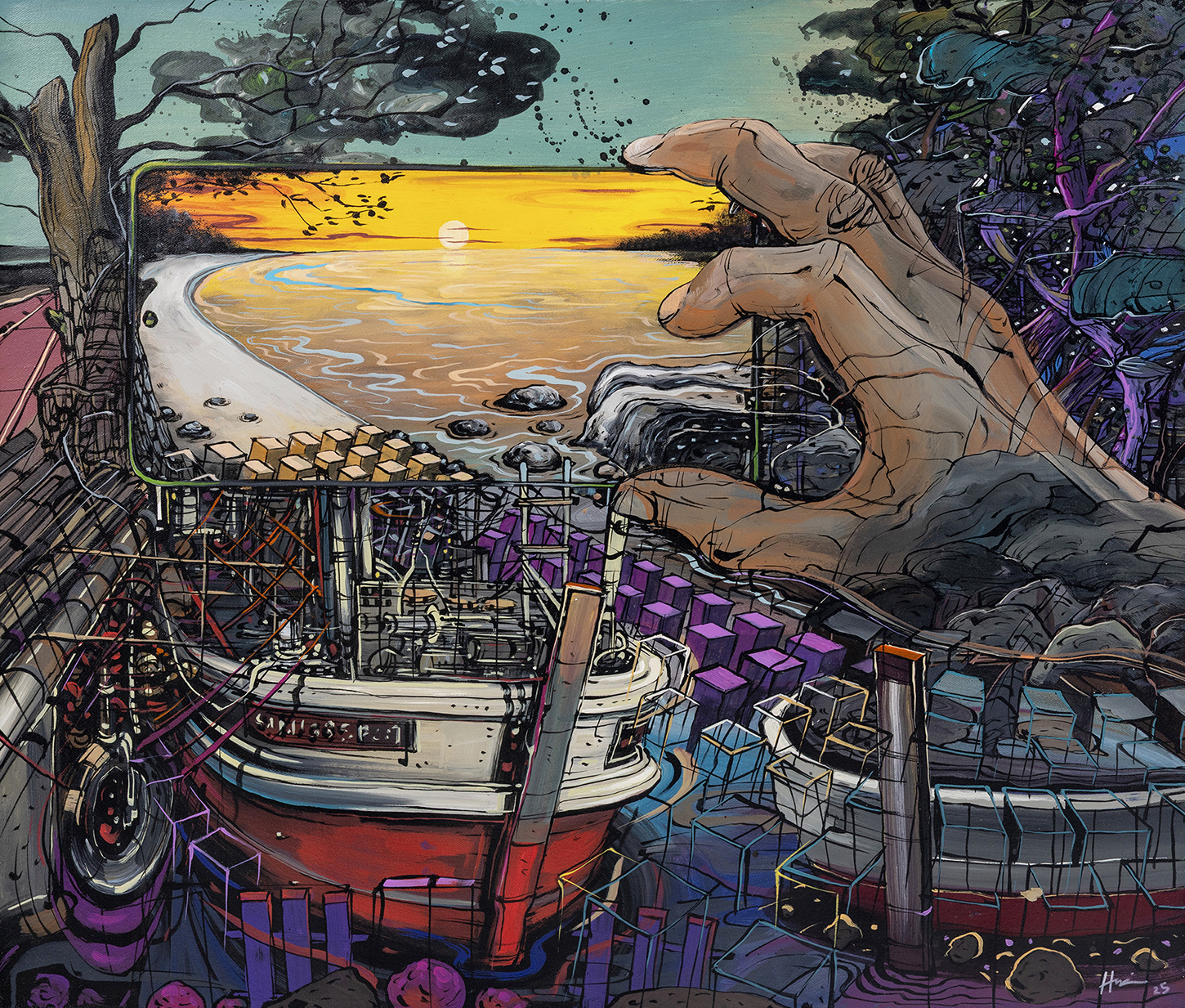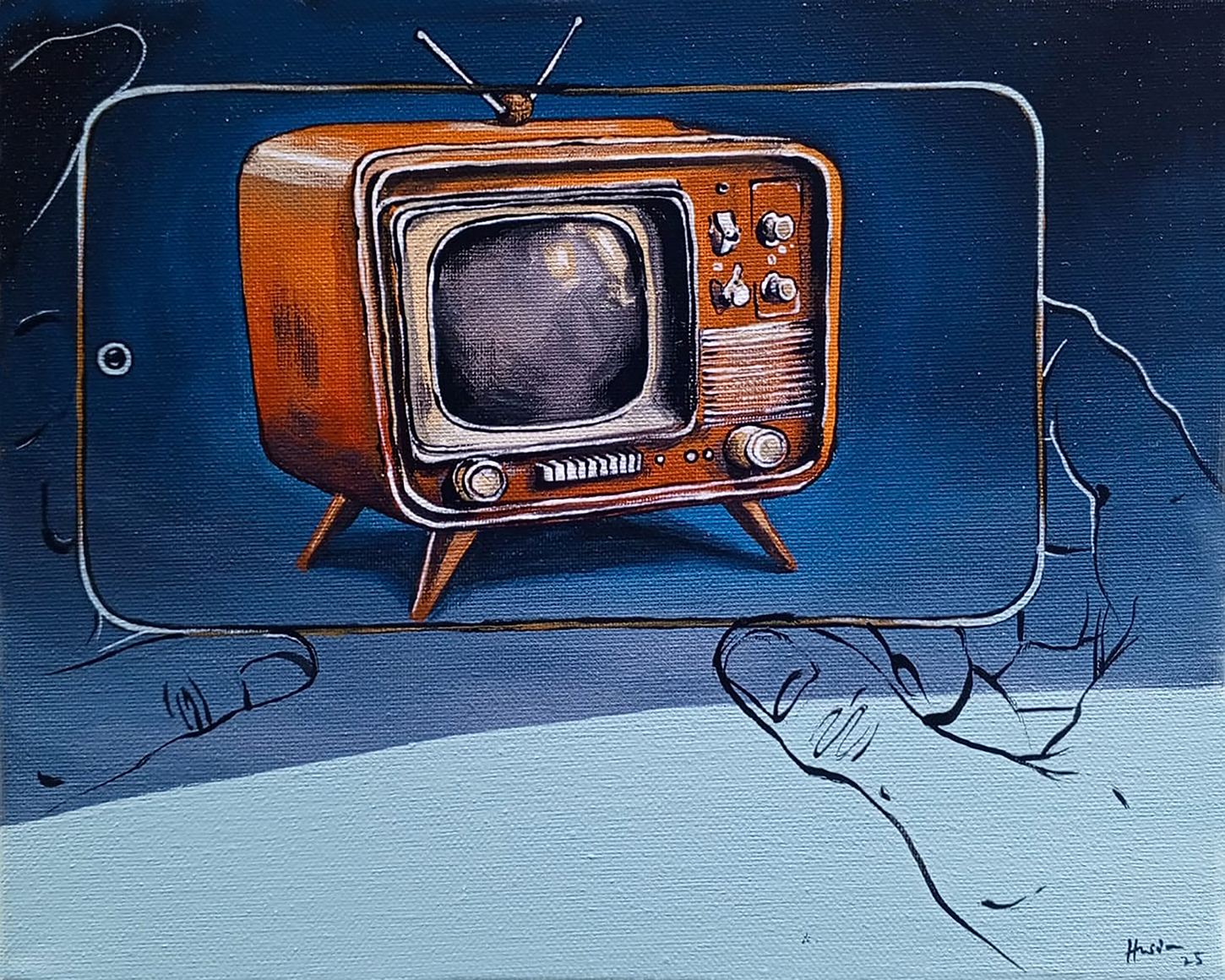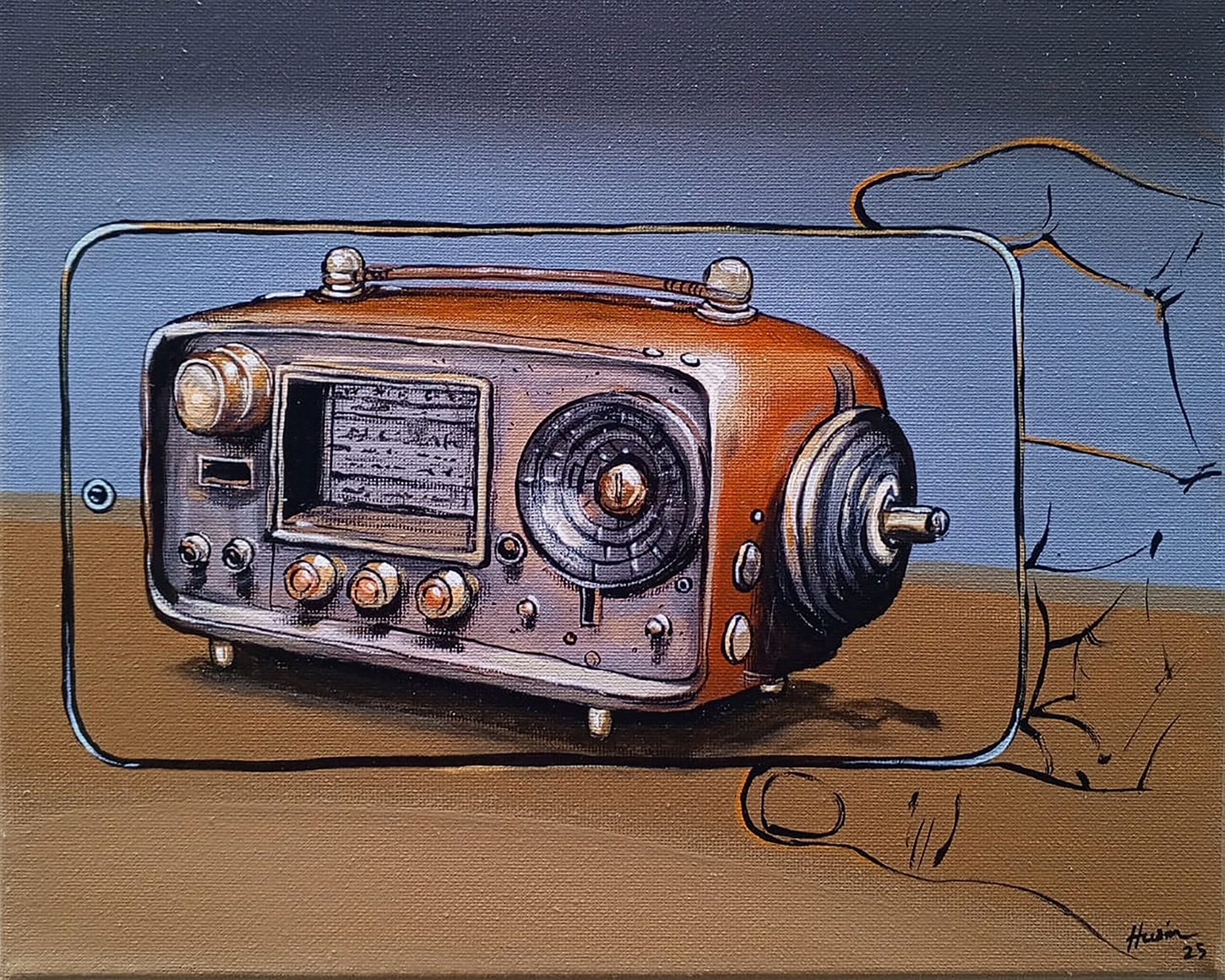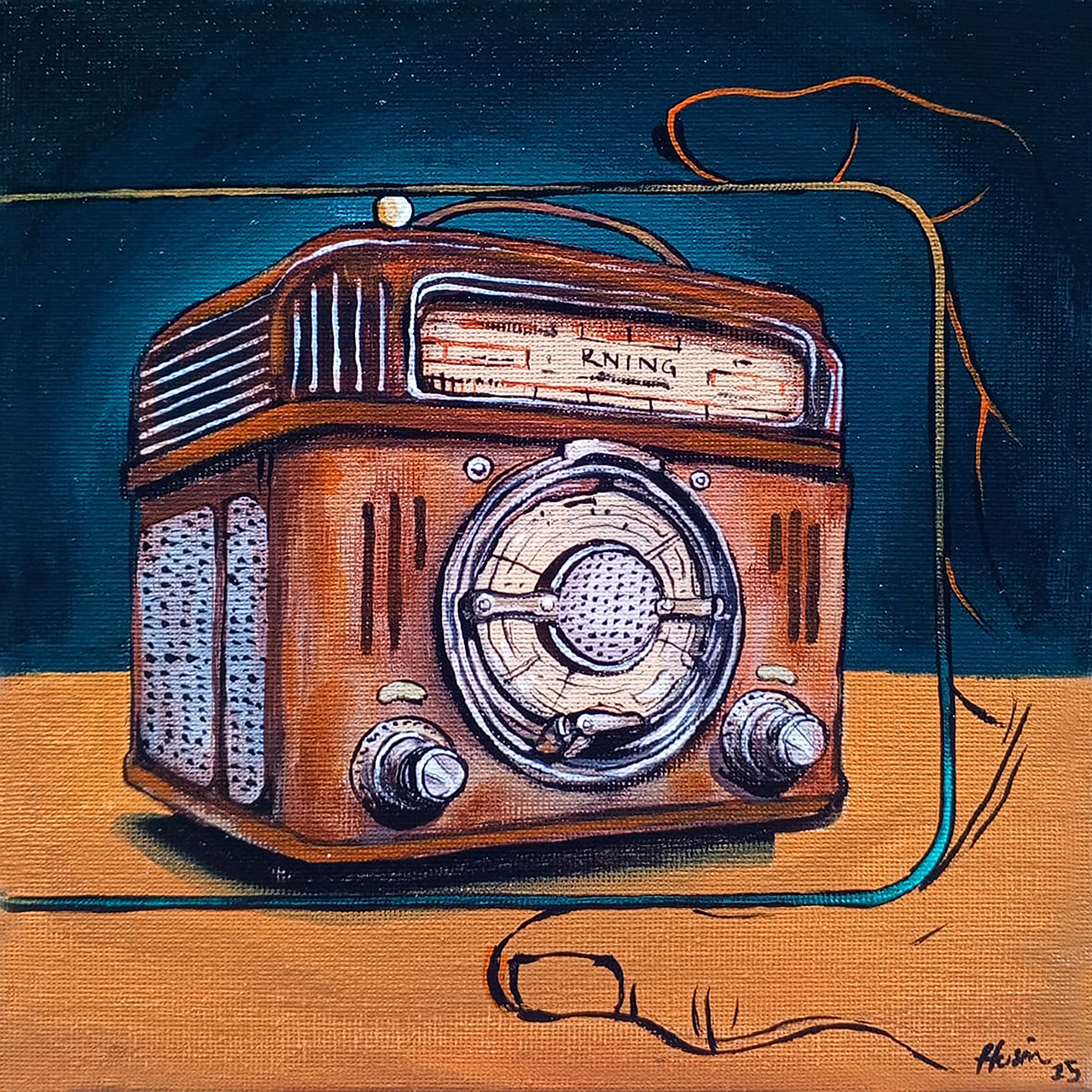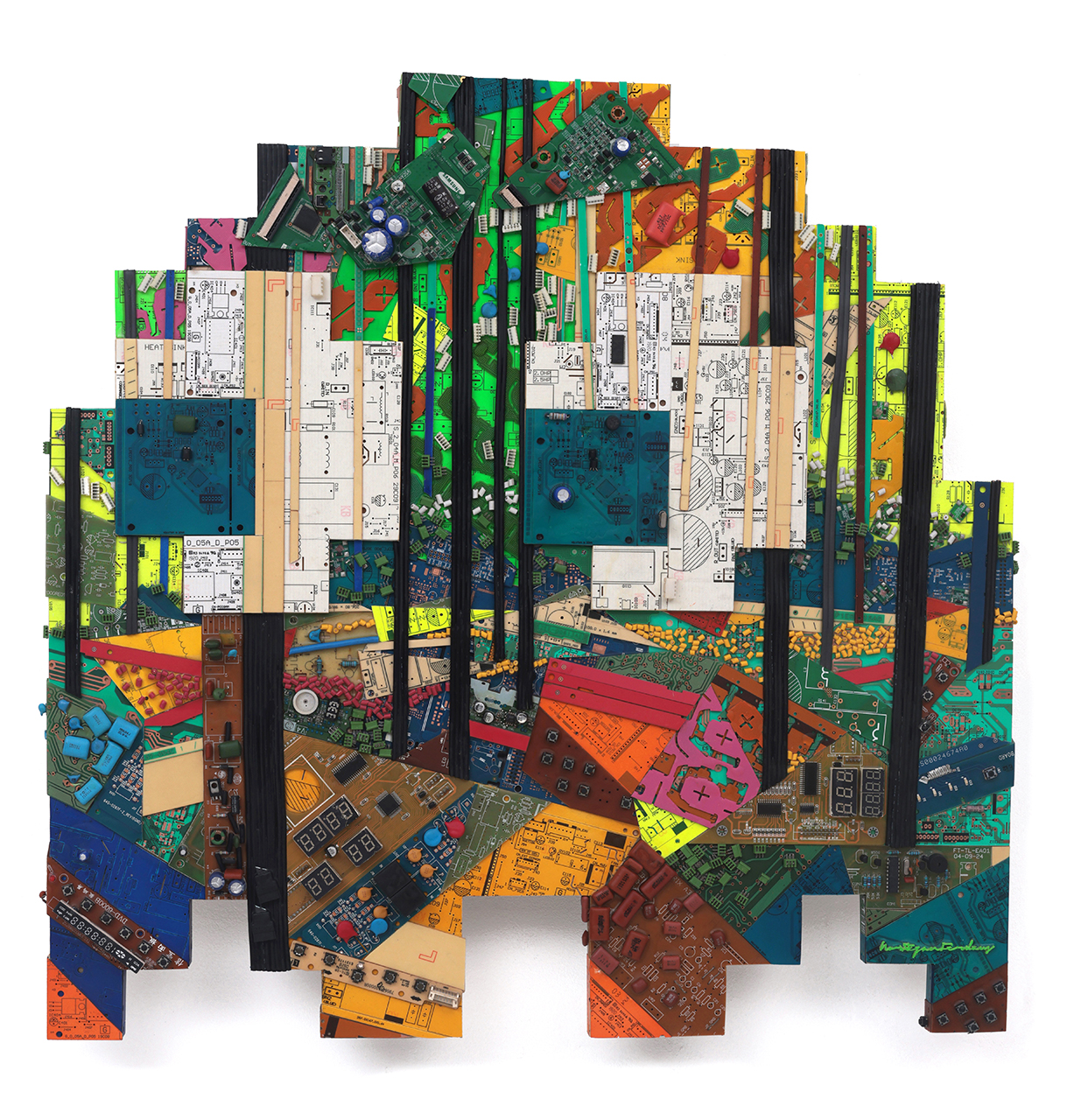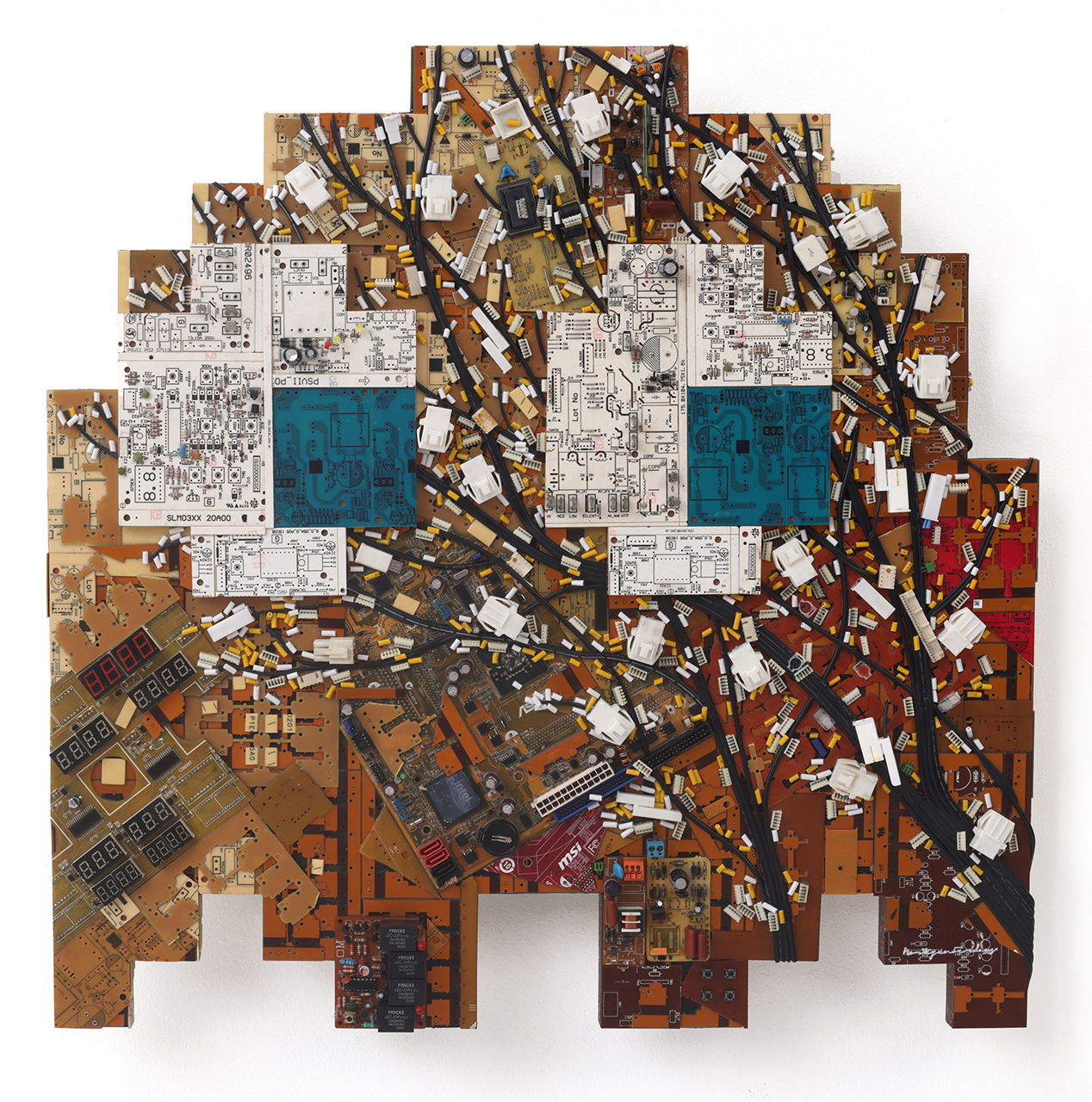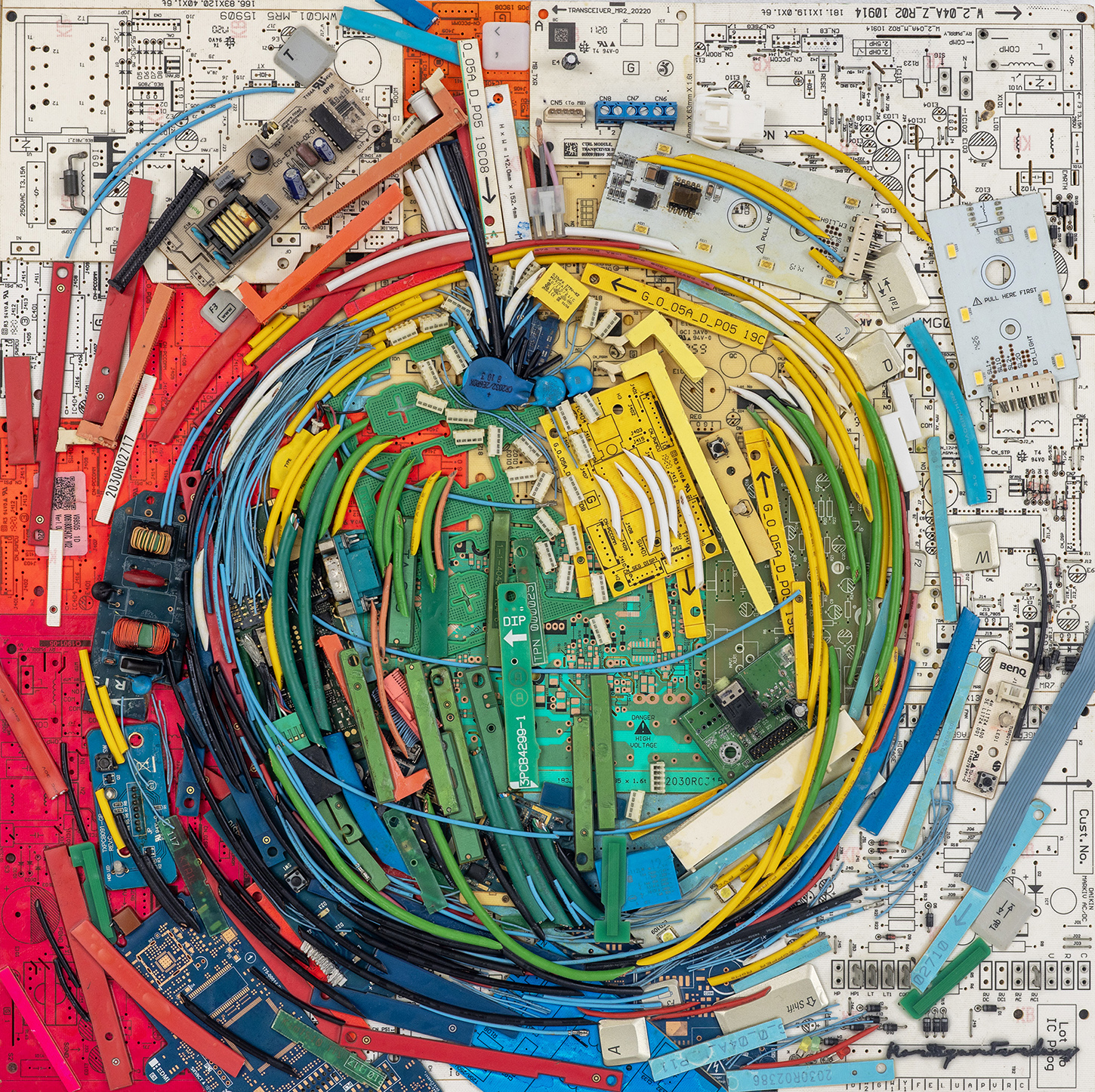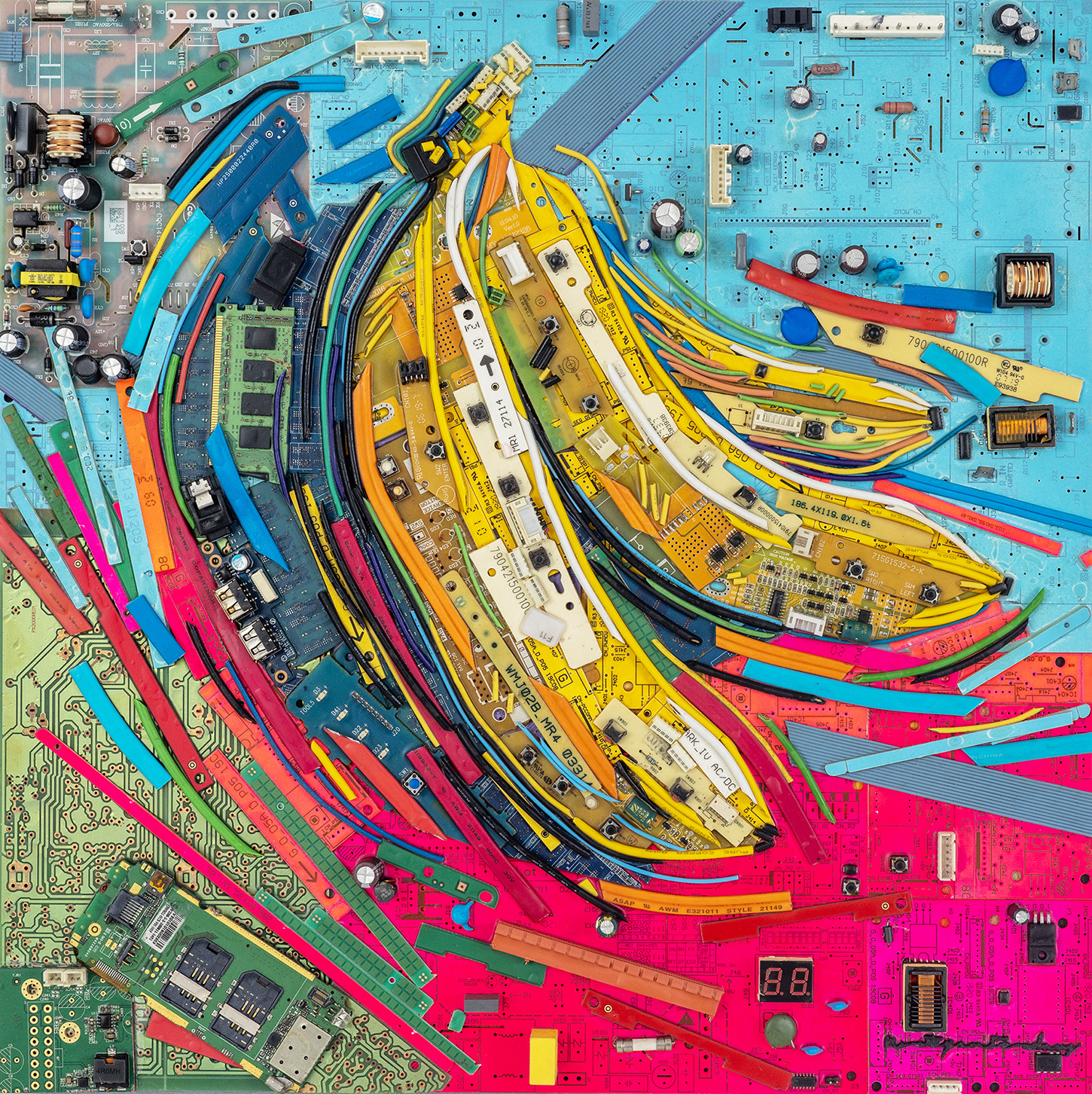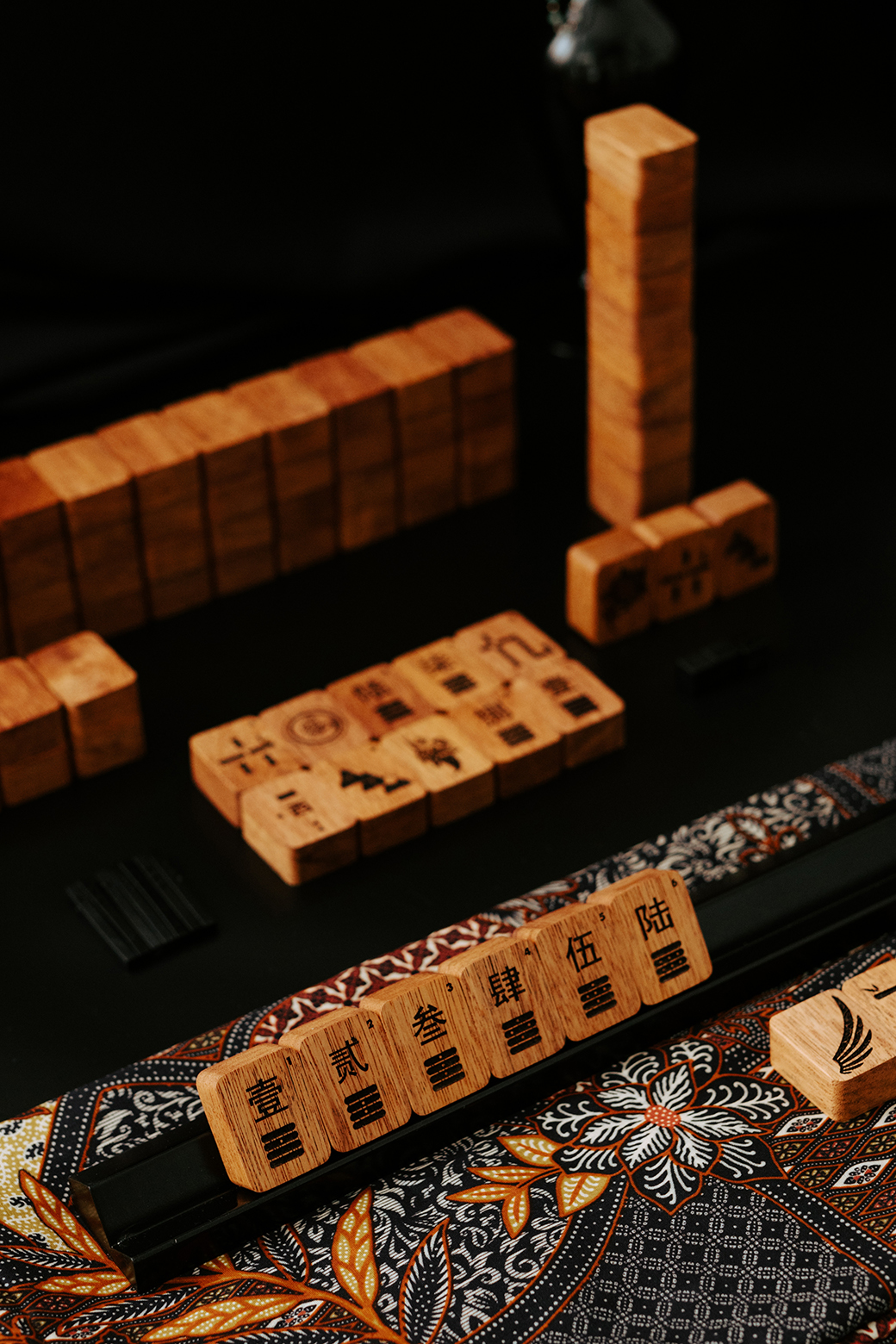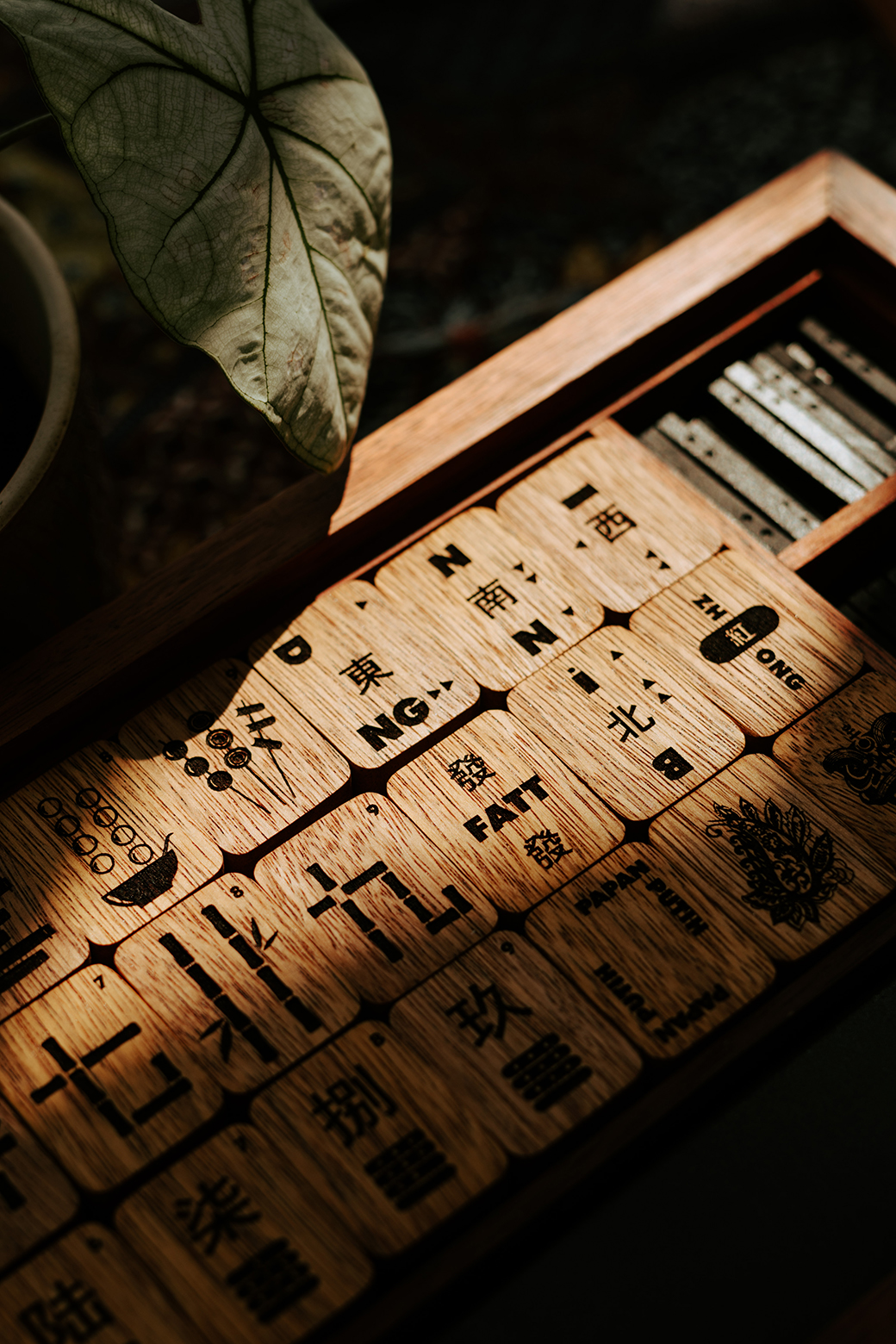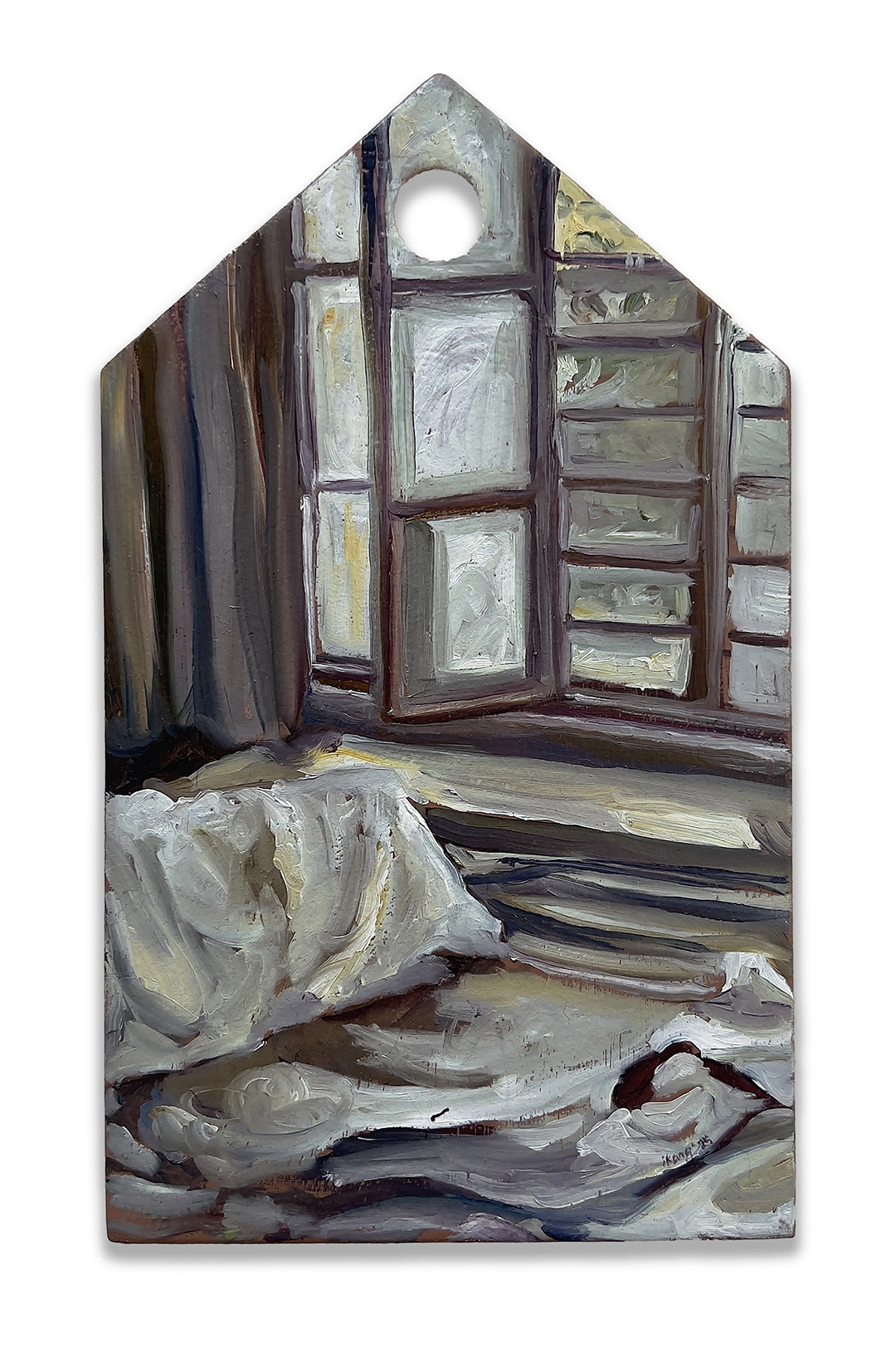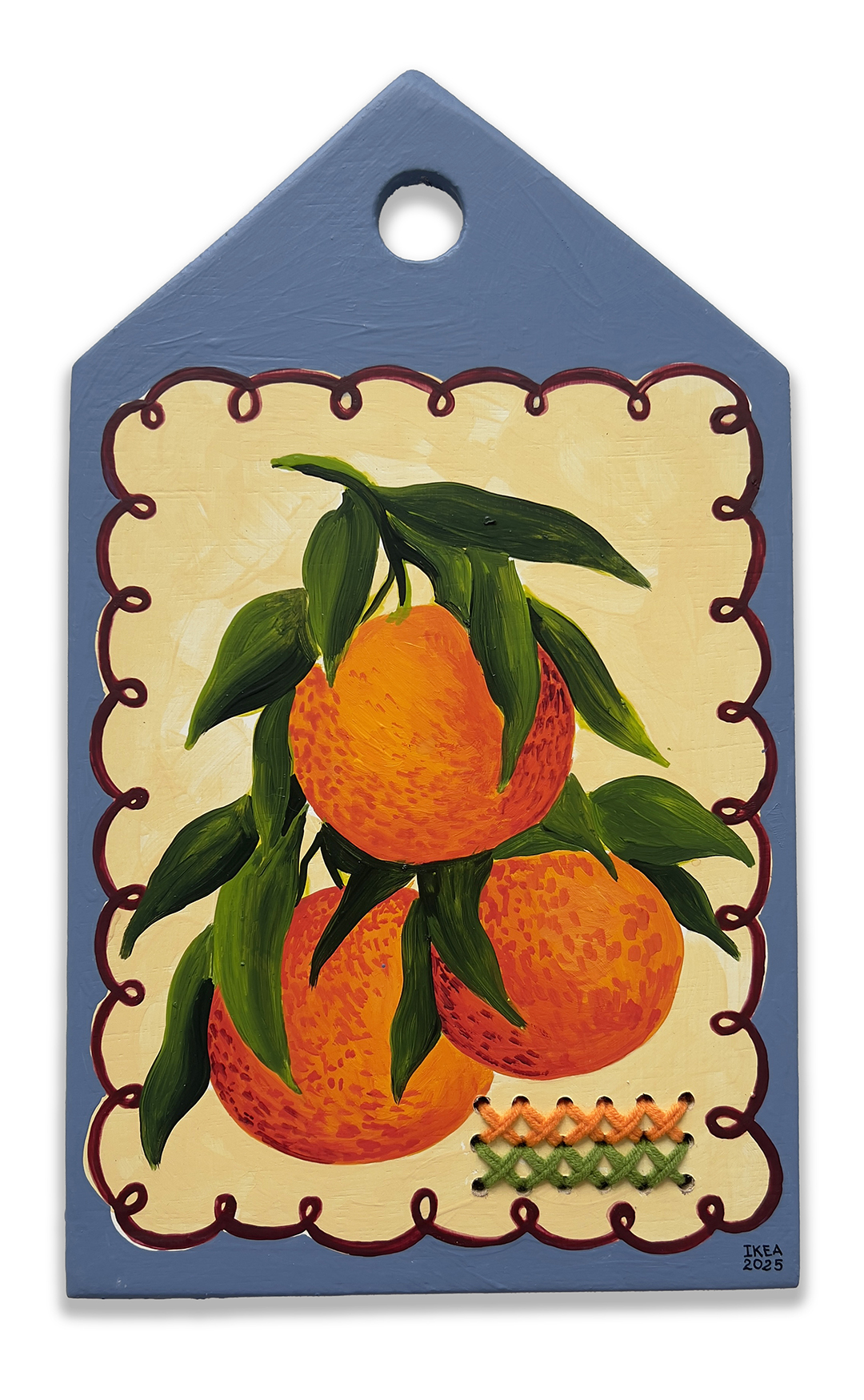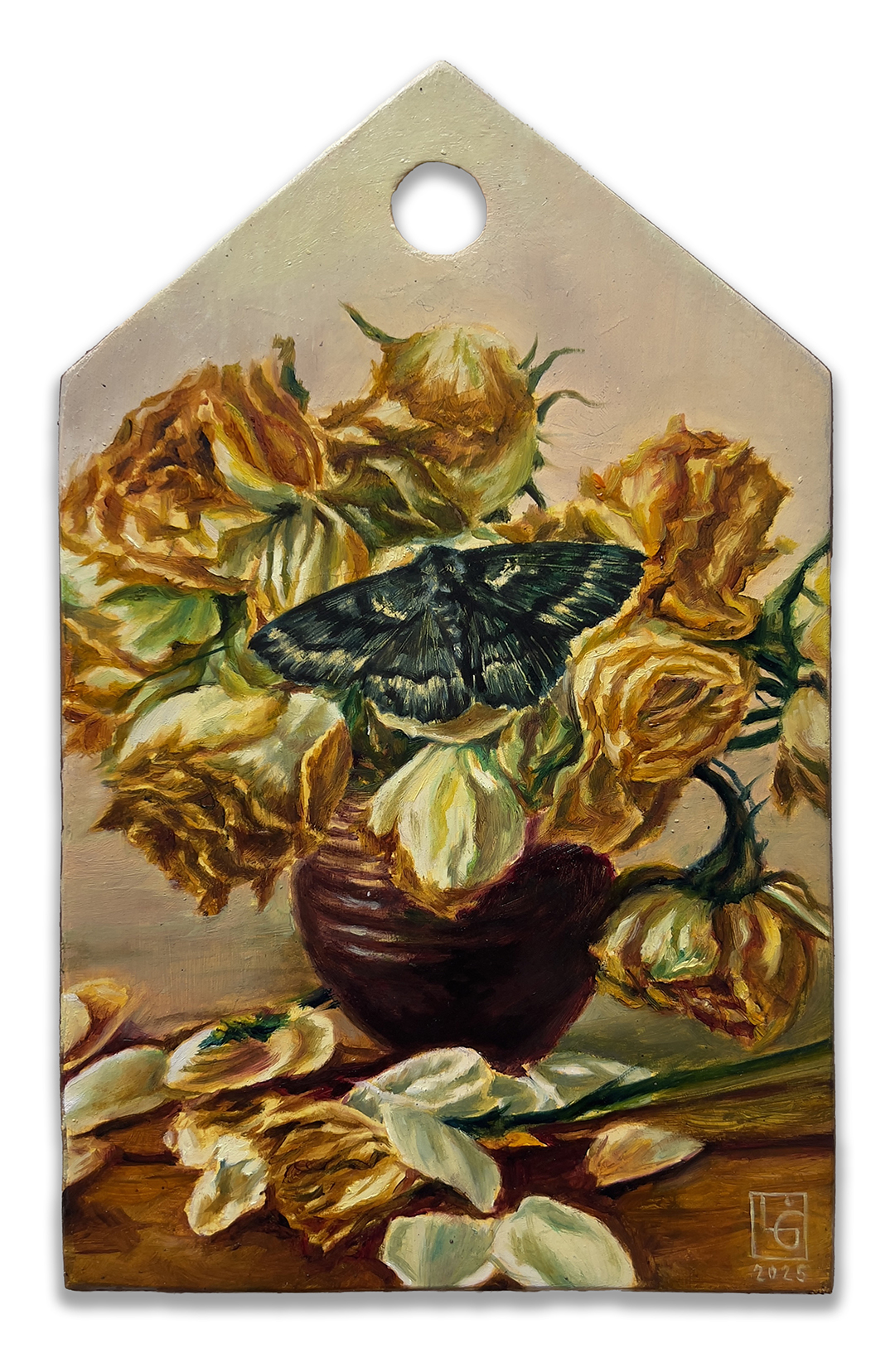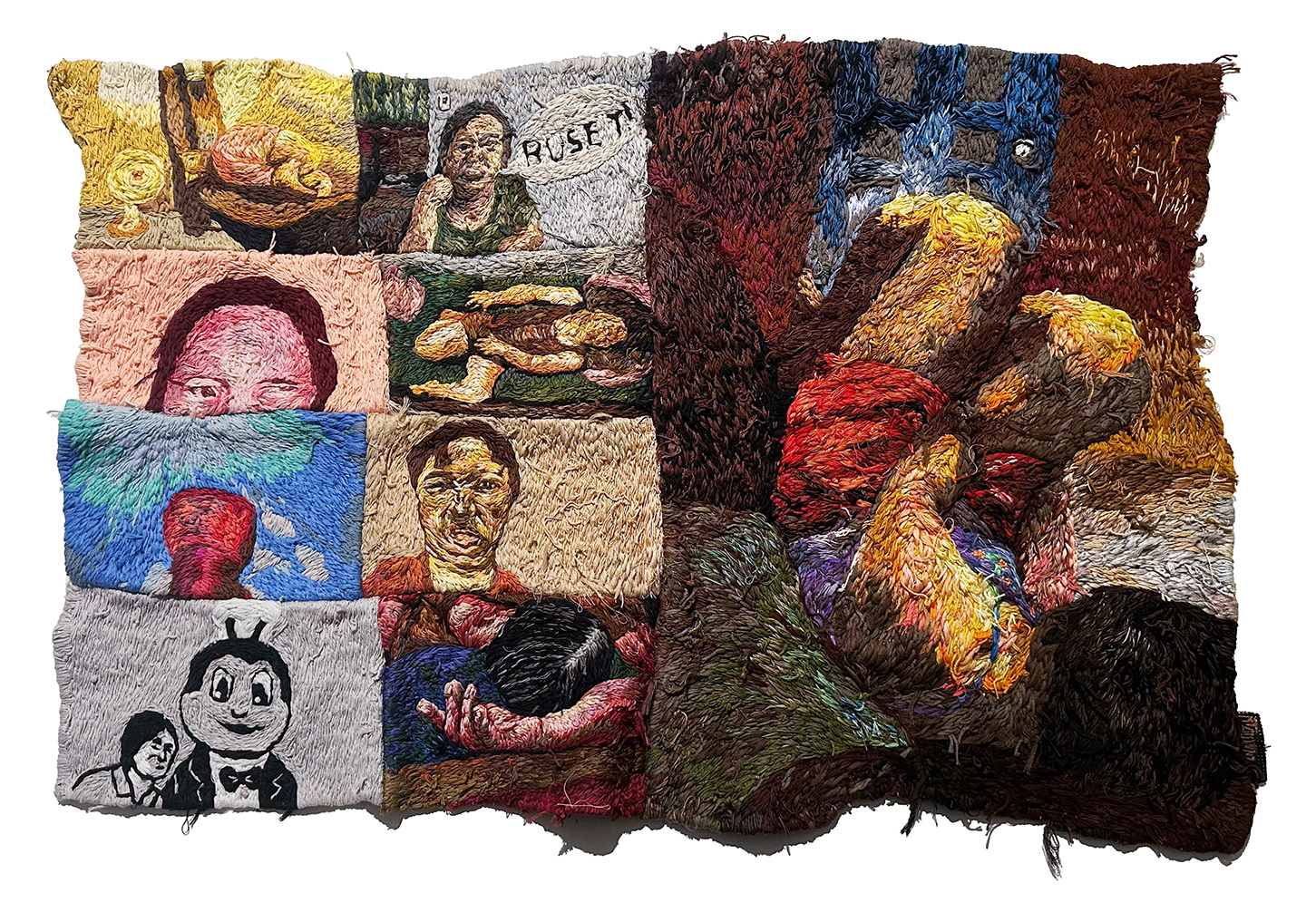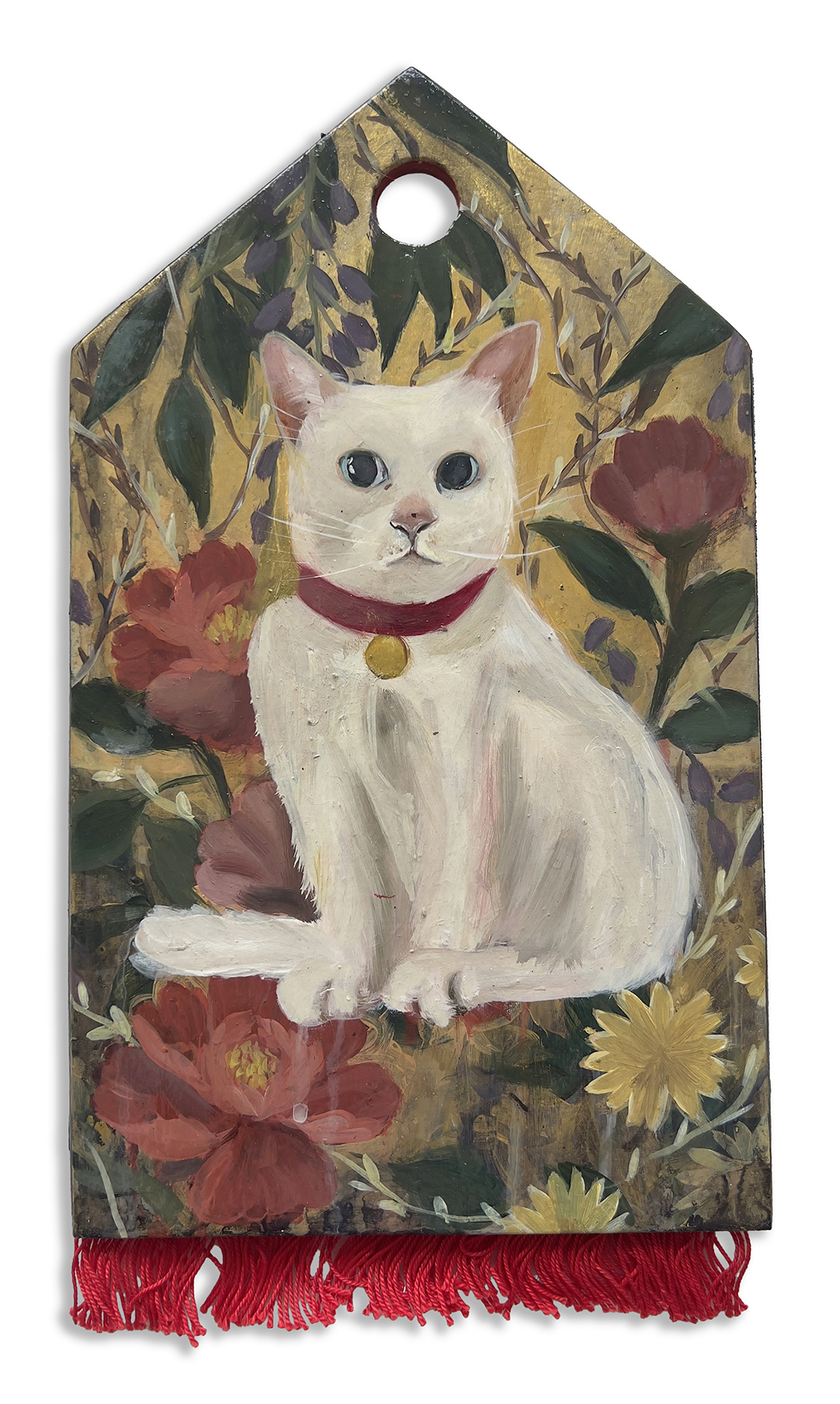Art Formosa 2025
Group Exhibition:-
Malaysia:
Anniketyni Madian
APIS
Po Oi
Shí
Sean
Tijan
Unreality Kai
Philippines:
Ikang Gonzales
Ikea Rizalon
Lance Gomez
Maricar Tolentino
Regina Reyes
V.I.P. Preview: 24th July 2025
Public Admission: 25th – 27th May 2025
Taipei Expo Dome, Taipei City, Taiwan
*Click on images to zoom in
傳統與轉化之間:聚焦東南亞
連結東南亞當代藝術現場——特別是菲律賓與馬來西亞——開啟了一場豐富的文化對話,揭示了共享歷史與獨特敘事之間的微妙交織。透過傳統技藝與當代表現手法的融合,來自該區域的藝術家探索身分、記憶、場所與韌性等主題。這些創作不僅反映在地現實,也回應更廣泛的全球關懷,使東南亞成為一股充滿活力的文化力量。當藝術家重新詮釋原住民智慧與日常經驗,他們促成對該地區更細緻、具層次的理解——挑戰單一視角,並肯認東南亞的多樣性。
當全球藝術界日益重視多元與包容性的敘事時,東南亞藝術家正逐步在國際舞台上展現其強烈的創作能量——透過展覽、駐村計畫與藝術家主導的跨界合作,積極參與全球對話。藝術與文化之間的交織,成為一座強而有力的橋樑,不僅培養同理心,也挑戰既有邊界,重新定義全球南方在當代藝術敘事中的核心位置。尤其是菲律賓與馬來西亞的藝術家,正在塑造一個既根植於傳統、又勇於創新的文化生態系——邀請世界重新認識東南亞作為藝術表達、批判性對話與前瞻性思維的蓬勃樞紐。
Between Tradition and Transformation: Southeast Asia in Focus
Bridging the contemporary art scenes of Southeast Asia—particularly the Philippines and Malaysia—offers a rich cultural dialogue that reveals both shared histories and distinct narratives. Through the fusion of traditional techniques and contemporary expressions, artists from the region explore identity, memory, place, and resilience. These works speak not only to local realities but also to broader global concerns, positioning Southeast Asia as a dynamic cultural force. As artists reinterpret indigenous knowledge and everyday experiences, they contribute to a nuanced, layered understanding of the region—one that challenges monolithic views and affirms Southeast Asia’s diversity.
As the global art world embraces more diverse and inclusive narratives, Southeast Asian artists are increasingly asserting their presence on the international stage—through exhibitions, residencies, and artist-led collaborations. The interconnection of art and culture becomes a powerful bridge, fostering empathy, challenging boundaries, and reframing the Global South not as peripheral, but central to the evolving global art narrative. Filipino and Malaysian artists, in particular, are fostering a dynamic cultural ecosystem that honors tradition while embracing innovation—inviting the world to engage with Southeast Asia as a flourishing center of artistic expression, critical dialogue, and visionary thought.
- MALAYSIA
- Anniketyni Madian
安妮凱蒂妮・瑪迪安(Anniketyni Madian,1986年生)是來自馬來西亞的藝術家,以融合伊班族文化的當代木雕創作聞名。她出生於砂拉越,畢業於馬來西亞瑪拉工藝大學(Universiti Teknologi MARA, UiTM),擅長將現代美學與傳統圖騰結合,尤以細緻繁複的「pua kumbu」紋樣為特色。她的作品因工藝精湛與文化內涵深厚而廣受讚譽,並曾在國內外多個重要藝廊與展覽中展出,奠定了她在馬來西亞當代藝術界的重要地位。安妮凱蒂妮透過創新的木材運用與對原住民藝術形式的堅持,架構出一種連結傳統與現代的敘事風格,啟發新一代馬來西亞藝術家以嶄新的方式探索自身文化根源。
《Fragments XS》 是一場對文化認同、傳統,以及現代化與傳承之間張力的鮮明探索。藝術家運用實木、樹脂與布料等混合媒材,編織出繁複紋樣與富動態感的構圖,向東南亞與原住民設計的豐富美學致敬,同時以當代視角重新詮釋這些文化語彙。作品中有機元素──如花卉與蝴蝶──與齒輪、零件等工業意象之間的對照,突顯出自然與工業化衝擊之間的微妙平衡,映照出傳統與現代不斷交織的時代對話。作品名稱 《Fragments XS》意指將破碎片段重新拼湊為完整敘事,象徵砂拉越文化、傳統與個人歷史交織而成的多層次身份結構。透過精緻的構成語彙,作品邀請觀者深入思考文化敘事的複雜性,以及傳統與進步之間持續變動的關係。
Anniketyni Madian (b. 1986) is a Malaysian artist renowned for her contemporary wood sculptures inspired by her Iban heritage. Born in Sarawak and a graduate of Universiti Teknologi MARA (UiTM), she combines modern aesthetics with traditional motifs, particularly the intricate pua kumbu patterns. Her work, celebrated for its craftsmanship and cultural depth, has been exhibited locally and internationally, establishing her as a prominent figure in Malaysian contemporary art. Through her innovative use of wood and dedication to preserving indigenous art forms, Anniketyni offers a compelling narrative that bridges tradition and modernity, inspiring a new generation of Malaysian artists to explore their cultural roots.
“Fragments XS” is a vibrant exploration of cultural identity, tradition, and the tensions between modernization and heritage. Using mixed materials such as hardwood, resin, and fabric, the artist weaves together intricate patterns and dynamic compositions to celebrate the richness of Indigenous and Southeast Asian design, while reimagining it through a contemporary lens. The juxtaposition of organic elements—like flowers and butterflies—with industrial motifs such as gears and cogs underscores the delicate balance between nature and the forces of industrialization, reflecting on the evolving dialogue between past and present. The title “Fragments XS” evokes the act of assembling disparate pieces into a cohesive whole, symbolizing the layered interconnections of Sarawakian culture, heritage, and personal history. Through its meticulous construction, the artwork invites viewers to engage with the complexities of cultural narrative and consider the ongoing interplay between tradition and progress.
- Apis
哈菲茲.沙希米(Haafiz Shahimi,1986年生),又名 APIS,是一位來自馬來西亞的跨領域藝術家,致力於融合版畫與行為藝術的創作實踐。自2014年以來,他便開創性地發展出受峇迪傳統啟發的火燒版畫技法,運用加熱的金屬模板將文化與神話意象印刻於畫布與麻布等材質之上。APIS 將藝術與熱力學原理結合,探索科學與神話、東方與西方、物理與哲學等二元對立之間的張力。他透過顛倒燃燒、化學處理與汽車漆等實驗性手法,將傳統與工業語彙相互交融,體現在其過往系列中。APIS 的前衛創作實踐持續突破當代馬來西亞藝術的邊界,以創新手法反思文化、重塑傳統。
當代數位文化的荒謬與現實,在 APIS 的《Bet You Wanna Slap It》系列中被幽默而尖銳地揭示。作品以大膽且諷刺的視角探討現今社群媒體的現象──在追求病毒式擴散與即時回饋的過程中,真誠的交流往往被犧牲。APIS 在此系列中直指社群媒體表演性的本質,以及在缺乏深思熟慮的環境下,所激發的衝動性與攻擊性反應。作品名稱本身既調皮又挑釁,以輕鬆的語氣吸引觀者深入探索,實則揭露當代圖像經驗如何在無止盡的滑動中被商品化與淺層化。介於反諷與內省之間,APIS 的創作邀請觀眾重新審視自身在這個高度媒體化世界中的角色──不只是觀看者,也是參與者
Haafiz Shahimi (b. 1986), also known as APIS, is a Malaysian interdisciplinary artist whose work bridges printmaking and performance art. Since 2014, he has pioneered pyrography print techniques inspired by batik traditions, using heated metal matrices to imprint cultural and mythological imagery onto materials like canvas and jute. Blending art with thermodynamic principles, APIS explores dualities such as science and mythology, East and West, and physics and philosophy. His experimental methods—including inverted burns, chemical treatments, and automotive paint—infuse traditional and industrial elements, as seen in his previous series. APIS’s boundary-pushing practice continues to redefine contemporary Malaysian art through innovation and cultural reflection.
“Bet You Wanna Slap It” series presents a bold and satirical examination of contemporary digital culture, where the pursuit of virality often outweighs genuine engagement. In this body of work, APIS provocatively addresses the performative nature of social media and the impulsive aggression often triggered in an environment driven by instant reactions and little reflection. The cheeky yet confrontational title draws viewers in with humor, while offering a deeper critique of how visual experiences are commodified in the age of endless scrolling. Positioned between irony and introspection, APIS’ work invites audiences to reflect on their roles as both viewers and participants within a hyper-mediated world.
- Po Oi
Fairuz Paisan(1981年生,馬來西亞),藝名為 Po Oi,是一位當代雕塑藝術家,以其創新運用木材與玻璃纖維創作圓形語彙的作品而聞名。他於2014年取得馬來西亞瑪拉工藝大學(MARA University of Technology)藝術與科技碩士學位,並融合傳統工藝與裝飾藝術(Art Deco)風格,創作出兼具色彩張力、象徵意涵與情感深度的雕塑作品。其創作橫跨壁掛式與立體裝置,將象徵外在美感的玻璃纖維與代表內在本質的木材並置,反思表象與真實之間的張力。
2025年,Po Oi 代表馬來西亞參與在日本大阪舉辦的世界博覽會,於馬來西亞館展出其雕塑作品,並獲得馬來西亞投資、貿易與工業部(MITI)典藏。同年,他於2025年香港Art Central藝術博覽會舉辦個展《I AM PO OI 3.0》,成為馬來西亞雕塑藝術邁向國際舞台的重要里程碑。他的作品以精湛的技術表現、文化參照與內斂的情感張力廣受好評。
Po Oi 近期創作系列《圈中之圈》與《種子》延續其對身份、記憶與個人轉化的深層探問。他運用玻璃纖維、汽車烤漆與木材鑲嵌等材料,塑造出兼具個人經驗與集體意識的雕塑形式。其中,《圈中之圈》聚焦於重複性、情感循環與包覆感;而《種子》則將種子視為內在能量的容器,承載著成長、傳承與自我覺醒的意象。這兩個系列共同展現了 Po Oi 致力於在傳統與當代之間建立對話,以細膩工藝與象徵語彙構築出兼具沈思與視覺張力的敘事風格。
Fairuz Paisan (b. 1981, Malaysia), known as Po Oi, is a contemporary sculptor known for his innovative use of circular forms in wood and fiberglass. A Master’s graduate in Fine Art and Technology from MARA University of Technology (2014), Po Oi blends traditional craftsmanship with Art Deco influences, creating works rich in color, symbolism, and emotional depth. His sculptures—ranging from wall-mounted to free-standing—pair fiberglass, representing external beauty, with wood, symbolizing inner essence, reflecting on the contrast between appearance and reality..
In 2025, Po Oi represented Malaysia at the World Expo in Osaka, exhibiting under the Malaysian Pavilion, with several of his works acquired by the Ministry of Investment, Trade and Industry (MITI). That same year, his solo exhibition “I AM PO OI 3.0” at Art Central Hong Kong marked a major step forward for Malaysian sculpture on the international stage. His work is recognized for its technical precision, cultural references, and quiet emotional resonance.
Po Oi’s recent series, Circle Within a Circle and Seeds, expand his exploration of identity, memory, and transformation. Using fiberglass, automotive paint, and inlaid wood, he creates sculptural forms that speak to both personal and collective experience. While Circle Within a Circle delves into repetition and emotional cycles, Seeds imagines growth and heritage as internal forces. Together, these works reflect Po Oi’s ongoing commitment to crafting thoughtful, visually compelling narratives that bridge tradition and contemporary culture.
- Sean
胡辛・奧斯曼(Husin Othman),藝名 Sean,是馬來西亞當代藝術家,其創作實踐植基於記憶、身份與文化延續的探討。2013年自馬來西亞瑪拉工藝大學(UiTM)美術系以優異成績畢業,Sean 的靈感深受其在霹靂州鄉村、與七位兄弟姊妹一同成長的童年經歷所啟發。他以富感染力的人物描繪與懷舊視角捕捉日常生活場景,細膩呈現馬來文化的價值與傳統,展現馬來西亞生活的精神面貌。2014年,他獲得馬來西亞UOB年度繪畫獎「最具潛力藝術家」殊榮,奠定其於藝壇的嶄露頭角。
2024年,Sean 受邀參加於中國桂林舉辦的首屆《和諧共融:中馬藝術交流展》,該展旨在透過當代藝術促進跨文化理解與交流。作為馬來西亞新銳藝術家代表之一,他的參與凸顯其在推動區域藝術對話中的積極角色。其作品亦獲桂林美術館典藏,彰顯其在跨國當代藝術脈絡中的共鳴,並鞏固其作為東南亞當代藝術關鍵聲音的地位。
這件作品彷彿是一幅記憶的框架,捕捉了藝術家生命中曾經存在的一個場域。它呈現出過往仍在記憶中呼吸的片段——每個街角、每條斑駁的巷弄、每處曾充滿聲音與故事的空間。即便現實中的場所隨著時間逐漸褪色,作品卻以兩種對比的維度將其重現:一為逐漸衰敗的現實,另一則是經過理想化記憶重構的數位幻景。此作激起一種懷舊情感,也許是對童年片段或過往未曾察覺的美感的追憶,如今透過科技的視角重新詮釋。作品揭示了現代生活的諷刺:一方小小的螢幕能夠改變觀看的角度,掩飾瑕疵,塑造一種從未真正存在的美好。畫面中,一邊是灰暗、雜亂的現實世界——擁擠的市集、靜默斑駁的街道、在時光中破敗的遊樂場,以壓抑的色彩與銳利的線條呈現;而在螢幕內,一切卻顯得繽紛、有序與理想化,隱喻著數位美學如何遮蔽現實,並重塑我們記憶中的過去。
Husin Othman, known professionally as Sean, is a Malaysian contemporary artist whose practice is rooted in memory, identity, and cultural continuity. A graduate with honors in Fine Art from UiTM in 2013, Sean draws upon his upbringing in rural Perak—where he was raised alongside seven siblings—as a wellspring of inspiration. His evocative figurative works capture the spirit of Malaysian life through nostalgic portrayals of everyday scenes, reflecting the values and traditions of Malay culture. In 2014, Sean was recognized as Malaysia’s Most Promising Artist with the UOB Painting of the Year award.
In 2024, he was invited to participate in the inaugural Harmony Unity: China–Malaysia Artwork Exchange Exhibition in Guilin, China—an initiative aimed at fostering cross-cultural understanding through contemporary art. Representing Malaysia among a curated selection of emerging voices, Sean’s inclusion highlighted his growing role in shaping regional artistic discourse. His work was acquired into the permanent collection of the Guilin Art Museum, underscoring his resonance within the broader transnational art landscape and affirming his position as a vital voice in Southeast Asian contemporary art.
This artwork serves as a frame of memory, capturing a place that was once part of the artist’s life. It reflects a past that still breathes in memory—every street corner, every worn-out alley, every space once filled with voices and stories. Though the physical location may have faded with time, the work presents it in two contrasting dimensions: a decaying reality and a digitally enhanced version, shaped by idealized memory. The piece evokes nostalgia, perhaps of childhood moments or unnoticed beauty, now reimagined through the lens of technology. It portrays the irony of modern life, where a small screen can transform perception—hiding flaws and crafting beauty that never truly existed. On one side, the real world appears dark and disordered—crowded markets, silent rusty streets, and abandoned playgrounds rendered in muted tones and harsh lines. Yet within the screen, everything is vibrant, orderly, and idealized, suggesting how digital aesthetics can mask reality and reshape how we remember the past.
- Tijan
出生於1986年的馬來西亞巴生(Klang),Tijan 於2009年畢業於瑪拉工藝大學(UiTM),獲得美術榮譽學士學位,主修雕塑,副修繪畫。她的創作風格融合雕塑與繪畫,呈現浮雕般的表面質地,反映出其雙重藝術基礎。於 UiTM Jalan Othman 攻讀碩士期間,她參與一場關於藝術與設計中永續性的研討課程,這對她產生深遠影響,使她的創作更聚焦於環境議題。
在育兒與家庭生活之間取得平衡的過程中,Tijan 對電子產品、玩具、家具與布料等消費後廢棄物的堆積有了更深刻的體悟,並開始將這些材料融入創作。她從自家庭院、親友及回收廠蒐集廢棄物,藉此批判消費文化、物質主義與當代生活對環境造成的壓力。電子廢棄物特有的鮮豔色彩與精緻細節啟發她發展出「新形式主義」(New Formal)美學——以組合與雕塑方式回應後形式主義,並注入馬來西亞在地語境。
在第二次個展《SEEK》中,Tijan 以經典遊戲《小精靈》中「幽靈」造型為剪影,內嵌森林與花卉等自然圖像,成為人類慾望與無盡消費迷宮的隱喻。這些作品轉化懷舊符號,形塑出對當代環境危機的深刻反思,並提出對永續發展與集體責任的呼籲。
Born in 1986 in Klang, Malaysia, Tijan earned her BA (Hons) in Fine Art from UiTM in 2009, majoring in Sculpture with a minor in Painting. Her signature style—relief-like surfaces that merge painting and sculptural form—reflects this dual foundation. Tijan’s MA studies at UiTM Jalan Othman, particularly a seminar on sustainability in Art and Design, deepened her focus on environmental issues and shaped her artistic direction.
Balancing motherhood and domestic life, she became increasingly aware of post-consumer waste—electronics, toys, furniture, and textiles—which she began integrating into her work. Sourcing discarded materials from home, friends, and recycling plants, Tijan critiques consumer culture, materialism, and the environmental toll of modern life. Electronic waste, in particular, inspires her with its vivid color and intricate detail, forming the basis of her “New Formal” aesthetic—a Malaysian response to post-formalism through assemblage and sculpture.
In her second solo exhibition “SEEK”, Tijan introduces cutout forms of Pac-Man ghosts, embedding natural imagery like forests and flowers within them. These works serve as metaphors for the maze-like pursuit of human desires and consumption, echoing the game’s endless chase. Through this visual language, Tijan reflects on the ecological consequences of modern living, transforming playful nostalgia into poignant commentary on sustainability and collective responsibility.
- Unreality Kai
黄凯毅 《Kaiyi Wong》,藝名 Unreality Kai,是一位來自馬來西亞的建築師、設計師及數位藝術家,專注於現實與虛擬領域的交匯點。他是 Unreality Studio 的創辦人,專精於建築設計、數位藝術及產品設計,並曾創作出一款木製麻將套件。他的作品旨在挑戰傳統觀念,並鼓勵探索新的設計可能性。凱毅與藝術家如 Red Hong Yi 合作過,並參與了如“月光龍”在吉隆坡白沙街的裝置藝術等項目。他創新的設計理念,持續對馬來西亞當代藝術與設計的發展做出貢獻。
《MyJong》是一場對麻將的文化再想像,突破其過去作為馬來西亞華人社群專屬遊戲的刻板印象,轉化為彰顯馬來西亞多元文化身份的嶄新象徵。此計畫透過視覺敘事與符號再詮釋,融合馬來、印度與原住民的文化元素,挑戰既有的文化界線,重新定義傳統為一種開放且持續演化的集體敘事。《MyJong》不僅是對文化傳承的致敬,更是一場對共融身份的前瞻性宣言——文化並非靜止不變,而是流動的、共享的、持續轉化的。
Kaiyi Wong, known as Unreality Kai, is a Malaysian architect, designer, and digital artist who explores the intersection of reality and virtual realms. As the founder of Unreality Studio , he focuses on architectural design, digital art, and product design, including creating a mahjong set out of wood . His work aims to challenge perceptions and encourage exploration of new design possibilities. Kaiyi has collaborated with artists like Red Hong Yi and participated in installations such as “Moonlit Dragon” at Petaling Street . His innovative approach continues to contribute to the evolving landscape of contemporary art and design in Malaysia
MyJong is a reimagining of mahjong as a shared cultural experience, transforming its perception from a game predominantly associated with the Chinese Malaysian community into a vibrant symbol of Malaysia’s multicultural identity. By integrating Malay, Indian, and Indigenous motifs through visual storytelling and symbolic reinterpretation, the project challenges cultural boundaries and redefines tradition as an inclusive and evolving narrative. MyJong stands as both a tribute to the richness of heritage and a progressive statement on collective identity—where culture is not static, but open, fluid, and shared.
- PHILIPPINES
- Ikang Gonzales
江·岡薩雷斯(Ikang Gonzales,1995 年生) 是一位居住於奎松市的菲律賓藝術家。她於 2012 年就讀菲律賓大學碧瑤分校美術系,之後於 2018 年畢業於菲律賓大學迪里曼校區建築學系。自此,她持續活躍於當代藝術領域,並參與多場群展,逐步建立起她在藝術界的聲音。
她的創作核心聚焦於「光」與「空間、陰影與感知」之間的對話。運用半透明布料上的精緻油彩繪畫,作品在光線的映照下化為發光的畫面,將光與色彩交織,營造出介於繪畫與裝置之間的獨特語彙。
作品常呼應「入口/門戶」的概念,引領觀者進入一個兼具私密、舒適與轉變的空間。透過結合建築的敏銳度與繪畫的細膩性,江·岡薩雷斯創造出靜謐而有力的藝術場域,映照光如何轉化環境,並折射出日常生活中細膩的情感共鳴。
Ikang Gonzales (b. 1995) is a Filipino artist based in Quezon City. She initially pursued Fine Arts at the University of the Philippines, Baguio (2012), before completing her Bachelor of Science in Architecture at the University of the Philippines, Diliman (2018). Since then, she has been actively exhibiting her works in various group shows, steadily building her presence in the contemporary art scene.
Her practice explores the realm of light and its dialogue with space, shadow, and perception. Working with intricate oil paintings on translucent fabric, she transforms these delicate surfaces into illuminated compositions, weaving light and pigment into cohesive pieces that blur the boundaries between painting and installation.
Often evoking the concept of “portals,” Gonzales’ works invite viewers into intimate spaces that balance privacy, comfort, and change. By combining architectural sensitivity with painterly detail, she creates quiet yet powerful reflections on how light transforms environments and, with it, the emotional resonance of the everyday.
- Ikea Rizalon
Ikea Rizalon(生於1994年)是一位菲律賓藝術家,其創作融合個人歷史與勞動、身份與物質文化等更廣泛的主題。她擁有服裝與織品背景,並於馬尼拉遠東大學(Far Eastern University)取得美術學士學位,主修繪畫。Rizalon 最初因夢想成為外科醫生而開始以縫線進行創作,早期曾在X光片上進行刺繡,將臨床影像轉化為關於記憶與療癒的親密敘述。
她的作品多以日常生活中的素材為出發點,如布料、線材、舊照片與雜誌,喚起傳統女性勞動的意涵,並將之作為媒材與訊息的雙重載體。無論是軟雕塑、手工刺繡畫布或繪畫作品,都展現她對勞動與工藝中潛藏力量的細膩感知。透過層疊、遮蔽與揭示圖像,她創造出充滿質感的構圖,回應脆弱與韌性、記憶與修復之間的張力,模糊個人與集體敘事的界線。
(家宅引福 II) 為一件結合刺繡與壓克力顏料的木板作品,體現Ikea Rizalon一貫的創作語彙:既帶有童趣與反思,也兼具親密與開放的氛圍。畫面描繪一串飽滿的橘子,以捲邊紋框構出溫暖氛圍,呼應豐饒、家族傳承與日常儀式的主題。畫面右下方以綠與橘交叉刺繡的細節,不僅增添觸感,也象徵關懷、勞動與靜謐的富足。透過這件既可愛又層次豐富的作品,Rizalon將日常圖像轉化為連結文化記憶與情感深度的入口。
Ikea Rizalon (b. 1994), intertwines personal history with broader themes of labor, identity, and material culture. With a background in fashion, textiles, and formal training in painting from Far Eastern University, Manila, she creates works that merge embroidery, painting, and found materials. Initially inspired by her dream of becoming a surgeon, her early explorations involved stitching on x-ray films—transforming clinical imagery into intimate reflections of memory and healing.
Rizalon’s works often center on domestic materials—fabric, thread, vintage photos, and magazines—invoking traditional “women’s work” as both a medium and message. Her soft sculptures, hand-embroidered panels, and painted surfaces reveal a sensitivity to the quiet power of labor and craft. By layering, covering, and revealing imagery, she creates textured compositions that speak of vulnerability, resilience, and the act of reclamation. Her art oscillates between softness and structure, nostalgia and resistance, ultimately blurring the boundaries between personal memory and collective narratives.
“Prosperity Magnet” is a hand-embroidered and acrylic painting on wood that captures Rizalon’s signature approach: playful yet reflective, intimate yet expansive. Depicting a cluster of ripe oranges framed in scalloped borders, the work evokes themes of abundance, heritage, and domestic ritual. A stitched detail at the bottom right—crossed threads in green and orange—adds tactile dimension, symbolizing care, labor, and quiet prosperity. Through this charming yet layered work, Rizalon repositions everyday imagery as a portal into shared cultural memory and emotional depth.
- Lance Gomez
蘭斯・戈梅斯(Lance Gomez)是一位菲律賓視覺藝術家,他的油畫作品經常探討記憶、腐朽,以及時間流逝中蘊藏的靜謐詩意。戈梅斯受過古典繪畫技巧的訓練,擅長將寫實主義與情感象徵主義融合,透過靜物與自然元素構築出引人深思的敘事。他的作品以豐富的質感、細膩的光影與深沉的哀愁氛圍著稱,邀請觀者一同沉思美與生命的無常。
在作品《Gunita I》(2025)中,戈梅斯描繪了一束逐漸凋萎的黃色玫瑰,與一隻深色的蛾子共同躺臥於木質表面,畫作呈現在一塊屋形木板上。「Gunita」在菲律賓語中意指「記憶」,作品象徵記憶既脆弱又令人難以忘懷——如花瓣般易逝,卻如深色翅膀的觀者般持久。作品中腐朽與優雅的對比,呈現對失落與追憶的沉思。戈梅斯不僅捕捉可見之物,更描繪那份被感受與記憶的存在。他的畫作彷彿成為沉靜的冥想空間,讓個人與集體記憶於畫布上交織共鳴。
Lance Gomez is a Filipino visual artist whose oil paintings often explore memory, decay, and the quiet poetry found in the passage of time. Trained in classical techniques, Gomez bridges realism with emotive symbolism, using still life and natural elements to evoke introspective narratives. His works are marked by rich textures, nuanced lighting, and a deep sense of melancholy—inviting viewers to dwell on the impermanence of beauty and life itself
In Gunita I (2025), Gomez paints a bouquet of withering yellow roses accompanied by a dark moth, laid upon a wooden surface, rendered on a house-shaped wood panel. The piece symbolizes memory (“gunita” in Filipino) as something both delicate and haunting—ephemeral like the petals, yet enduring like the dark-winged observer. The contrast between decay and quiet elegance reveals a meditation on loss and remembrance. Through this, Gomez captures not just what is seen, but what is felt and remembered. His works stand as contemplative spaces—where personal and collective histories converge in painterly silence.
- Maricar Tolentino
瑪莉卡・托倫提諾(Maricar Tolentino,1994年生)為現居菲律賓安蒂波洛的視覺藝術家,創作核心聚焦於刺繡與布料——這些材質常與女性氣質與家庭勞動相連結。她畢業於菲律賓大學迪里曼校區(University of the Philippines Diliman)繪畫進修課程,自2015年起活躍於當代藝術場域。托倫提諾將傳統上被視為「柔性」的工藝形式轉化為銳利的社會評論,探討脆弱性、性別期待與日常中的反抗精神。
她的手工刺繡作品多取材自都市菲律賓的日常景象、女性身體與家務圖像。藉由層疊透明與不透明的布料,再以充滿表情的線縷縫織其上,打破刺繡作為裝飾工藝的固有印象,注入幽默、批判與個人記憶。在展覽如《Sipat》(2023)與《Pasilip》(2024)中,她運用蚊帳、衣架與床單等意象,直指男性凝視、消費文化與父權社會在家庭領域中的深層影響。
作品《Inako》(2018)是一幅關於藝術家母親的刺繡肖像,由記憶與日常片段拼湊而成。「Inako」在菲律賓語中同時意指「我的母親」與「我承擔起責任」,映照出母親在家庭中無聲的勞動與堅韌。作品以拼貼方式編織出一幕幕親密場景,透過豐富的色彩與觸感層次,致敬母職所承載的情感與身體勞動。此作充分體現托倫提諾的創作脈絡——她透過刺繡這項媒材與隱喻,展現女性的力量、愛與生命經驗的再詮釋。
Maricar Tolentino (b. 1994) is a Filipino visual artist based in Antipolo whose practice centers on embroidery and fabric—materials often tied to femininity and domestic labor. A graduate of the certificate program in Painting at the University of the Philippines Diliman, she has been active in the Philippine contemporary art scene since 2015. Tolentino reclaims traditionally “soft” crafts and transforms them into sharp social commentary, exploring themes of vulnerability, gender expectations, and everyday resistance.
Her hand-stitched works frequently depict scenes drawn from urban Filipino life, the female form, and household iconography. Layering sheer and opaque fabrics with expressive threadwork, she disrupts the decorative associations of embroidery by embedding humor, critique, and personal memory. In past exhibitions like Sipat (2023) and Pasilip (2024), she employed motifs such as mosquito nets, hangers, and linens to confront the male gaze, consumerism, and patriarchal roles within the domestic sphere.
The work Inako (2018) is an embroidered portrait of her mother, created from memory and everyday observation. “Inako” holds dual meaning—both “my mother” and “I took responsibility”—speaking to her mother’s silent labor and resilience within the family. Through a patchwork of intimate vignettes, stitched with bold texture and color, Tolentino honors maternal care while acknowledging the emotional and physical weight it carries. The piece reflects her broader practice: a feminist reclamation of thread as both material and metaphor for strength, love, and lived experience.
- Regina Reyes
雷吉娜・雷耶斯(Regina Reyes)於1990年代初出生於馬尼拉,並在黎剎省一棟充滿歷史氣息的祖屋中成長。作為一位菲律賓藝術家,她的創作實踐深植於「家」、「記憶」、「女性身分」與「時間」等主題之中。雷耶斯早期在富有歷史情感的家庭空間中的經驗,深深影響了她跨領域的創作形式,涵蓋刺繡、拼貼、繪畫、雕塑與寫作等媒介。她透過針線藝術反思女性身份的複雜性,將生活環境視為共創者融入拼貼創作,同時以整體藝術實踐探討短暫與永恆之間的對話——在日常節奏中發掘細膩的美感。
雷耶斯於2017年畢業於菲律賓大學迪里曼分校美術學士學位,並自2014年起活躍於菲律賓當代藝術圈。她曾舉辦個展,包括於Mono8畫廊展出的《Temporal Dwellings》(2021),於Galerie Stephanie舉辦的《No One’s Rushing on a Sunday》(2021)及其延續展《Notes on Surrender》(2022)。她的作品亦多次參與群展與全國性藝術博覽會。目前,雷耶斯於馬尼拉與南哥打巴托省的將軍市之間往返生活與創作。
這幅作品中的白貓,身披紅色項圈與金鈴鐺,靜坐於花葉繁茂的背景之中,彷彿化身為家宅的守護靈。自古以來,貓在世界各地的文化中皆被視為能驅邪避凶、招福納祥的靈獸,不僅擁有靈敏的感知力,也象徵獨立與溫柔的力量。畫中的白貓凝視前方,目光安定而堅定,其姿態如同沉靜的守門人,在無聲中守護著居所與心靈的平安。紅鈴與金飾不僅增添畫面視覺重點,更象徵幸福的召喚與內在能量的流動。此作融合了民間信仰與當代情感,將日常中的守護意象昇華為富含寓意的文化符號,傳達出一種柔中帶剛、靜中藏力的情感共鳴。
Regina Reyes, born in Manila in the early 1990s and raised in a heritage home in Rizal. A Filipino artist whose practice is rooted in themes of home,memory, womanhood, and time. Her early experiences in a familial space steeped in history continue to shape her multidisciplinary work, which spans needlework, collage, painting, sculpture, and writing. Reyes uses needlework to reflect on the complexities of womanhood, while her collages incorporate her surroundings as co-authors, and her broader practice contemplates the ephemeral alongside the eternal—finding beauty in the ordinary rhythms of life.
A graduate of the University of the Philippines Diliman (BFA, 2017), Reyes has been active in the Philippine art scene since 2014. She held solo exhibitions including Temporal Dwellings at Mono8 Gallery (2021), No One’s Rushing on a Sunday at Galerie Stephanie (2021), and its sequel Notes on Surrender (2022). Her work has been shown in numerous group shows and national art fairs. She currently lives and works between Manila and General Santos, South Cotabato.
In many cultures, the cat is revered as a spiritual guardian—one that wards off evil, brings blessings, and anchors serenity within the home. In this work, a white cat adorned with a red collar and golden bell sits poised amidst a lush backdrop of blooming flowers and tangled foliage. Its calm yet watchful gaze suggests both quiet protection and dignified presence, evoking the role of a silent sentinel within domestic space. The red and gold accents draw the viewer’s attention, symbolizing good fortune, vitality, and sacred energy. By blending folkloric symbolism with a personal, almost devotional rendering, the artist transforms an everyday creature into a vessel of emotional resonance and cultural memory. The painting offers not only visual charm but a deeper meditation on safety, spiritual grounding, and the unseen powers that inhabit the spaces we call home.
